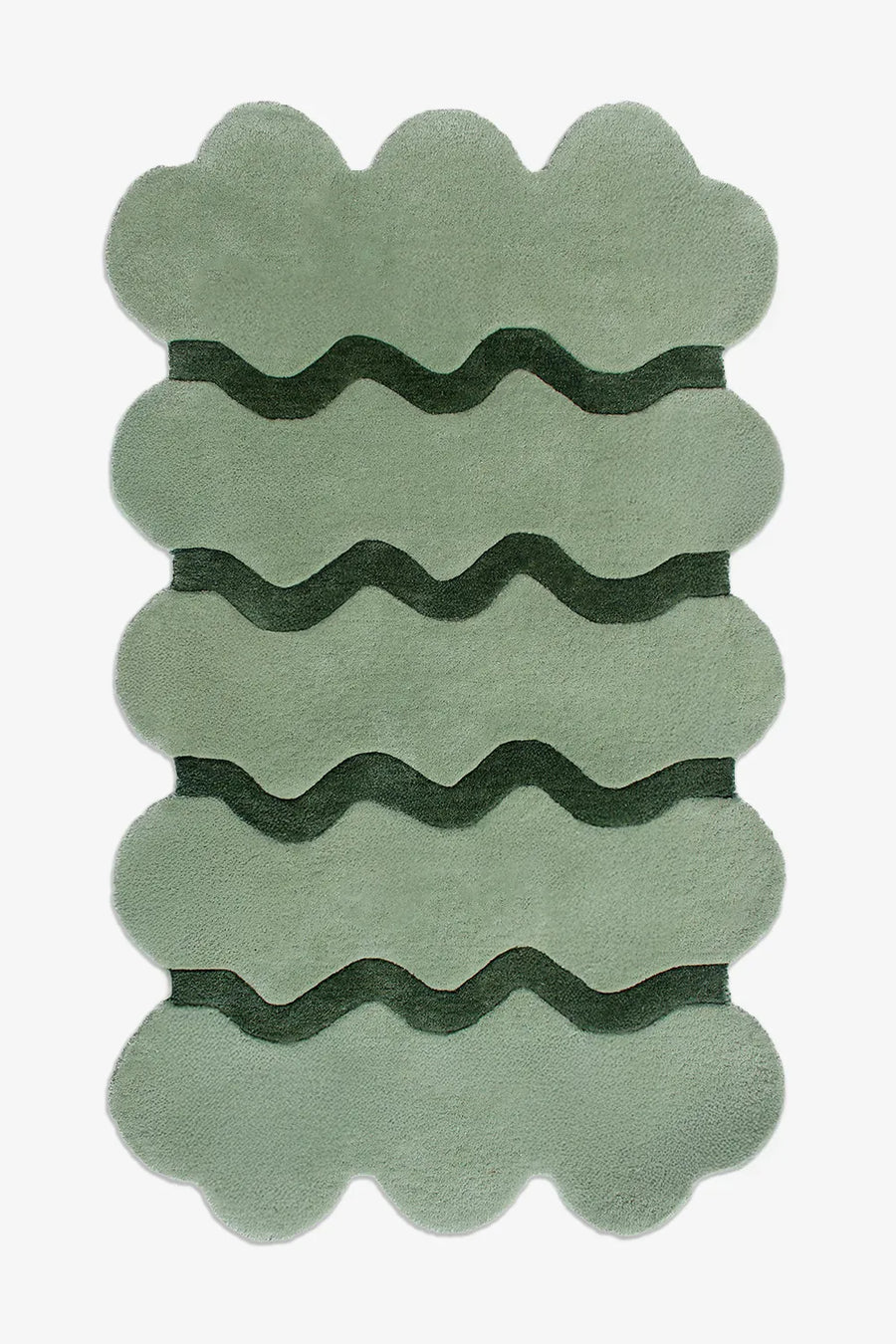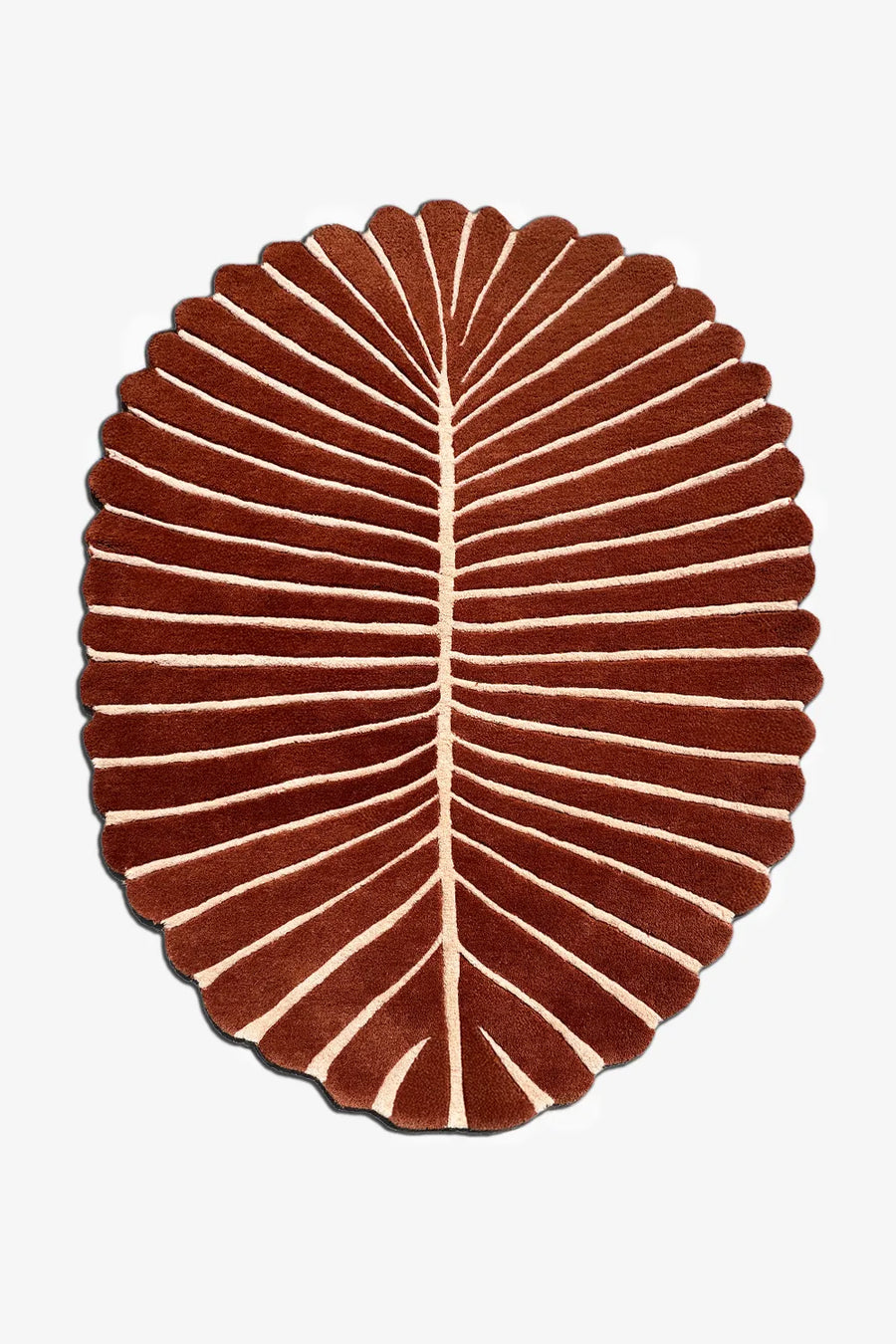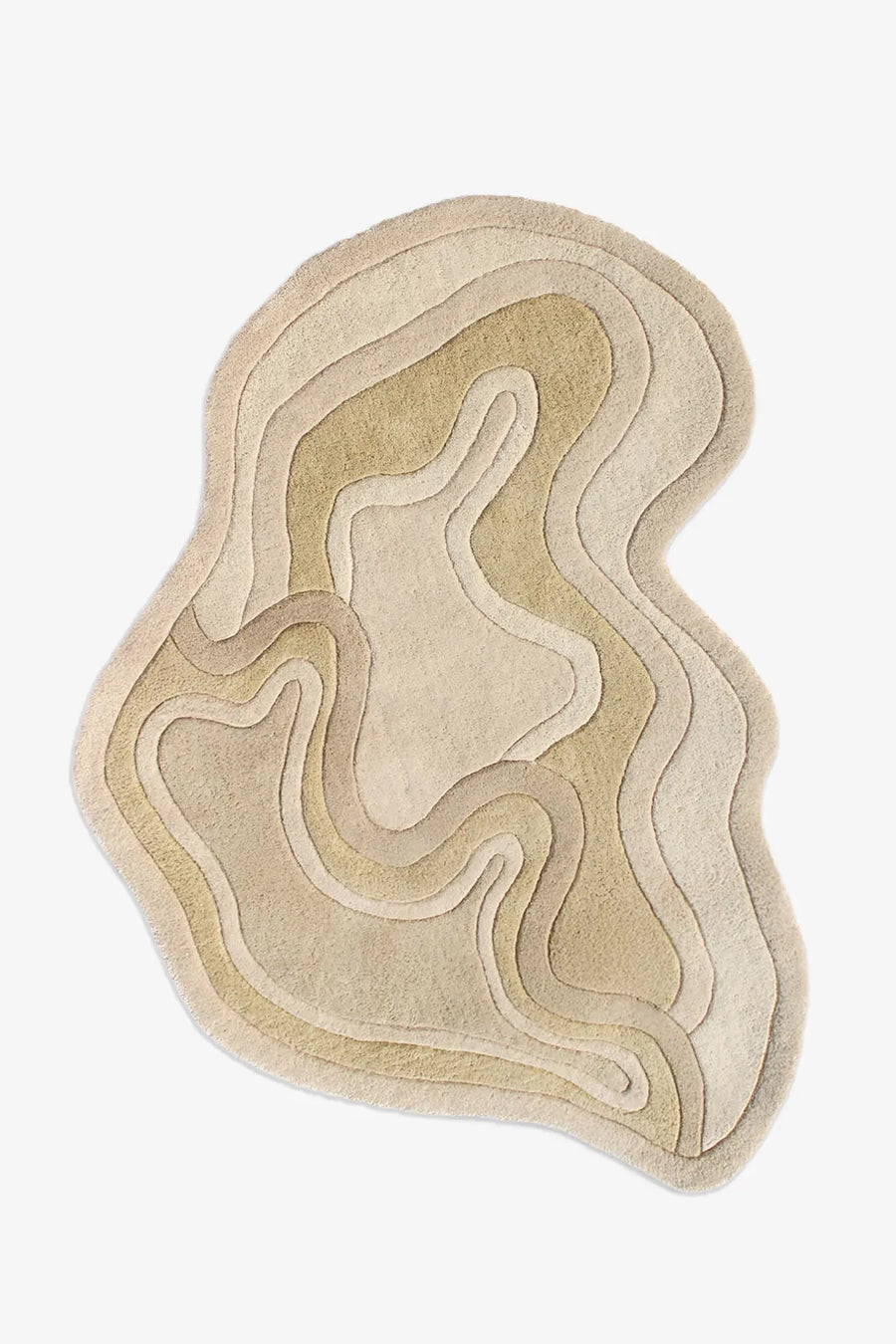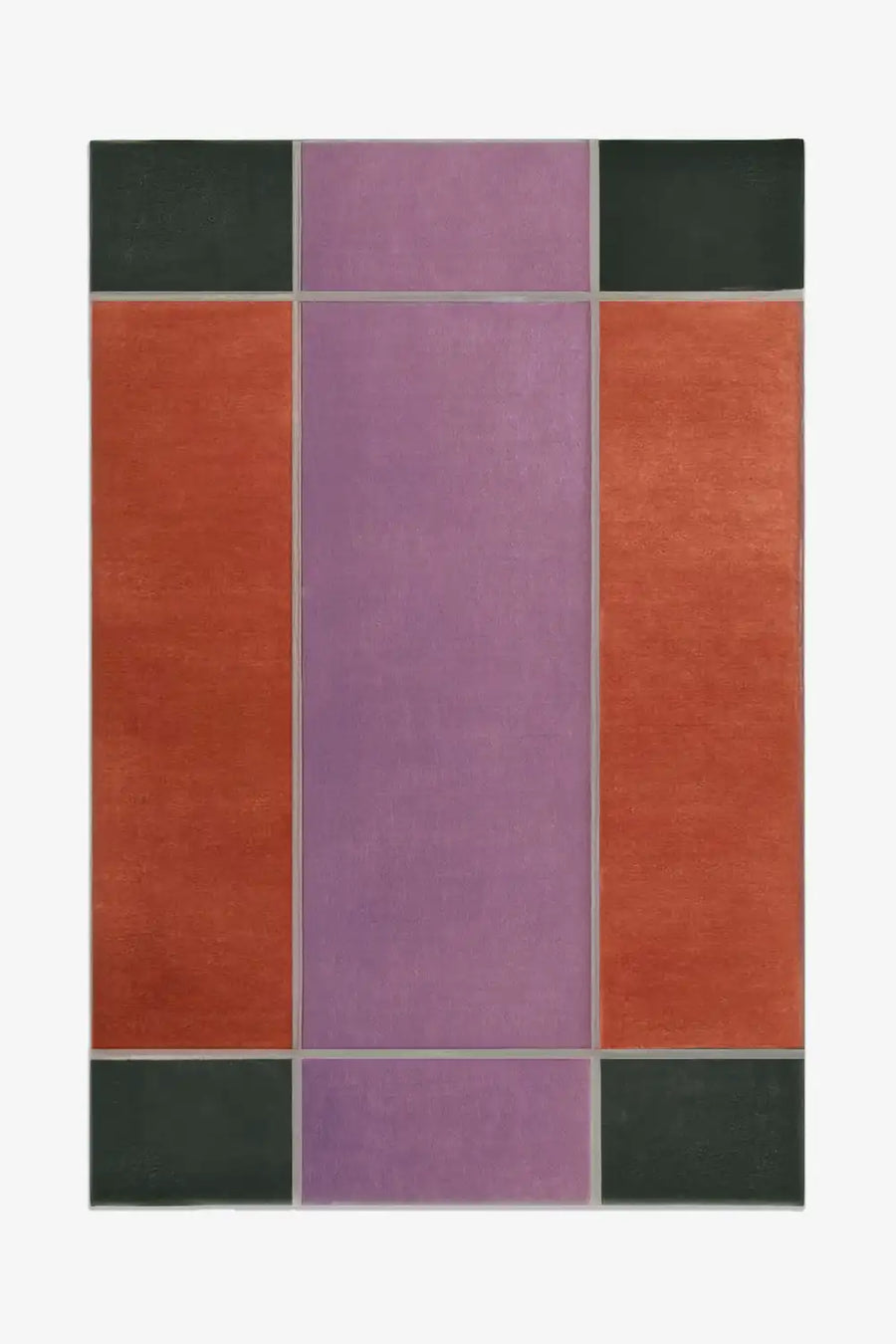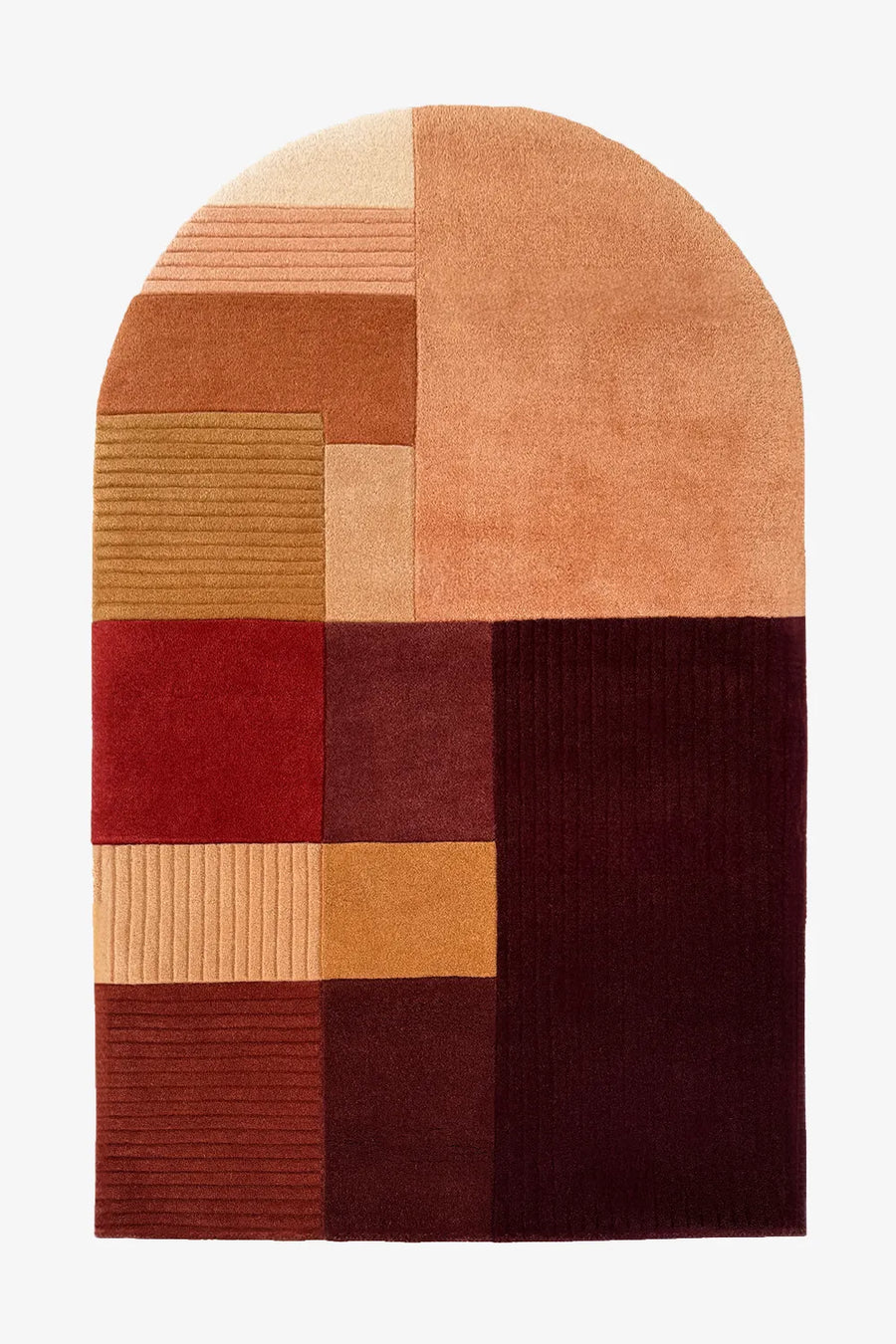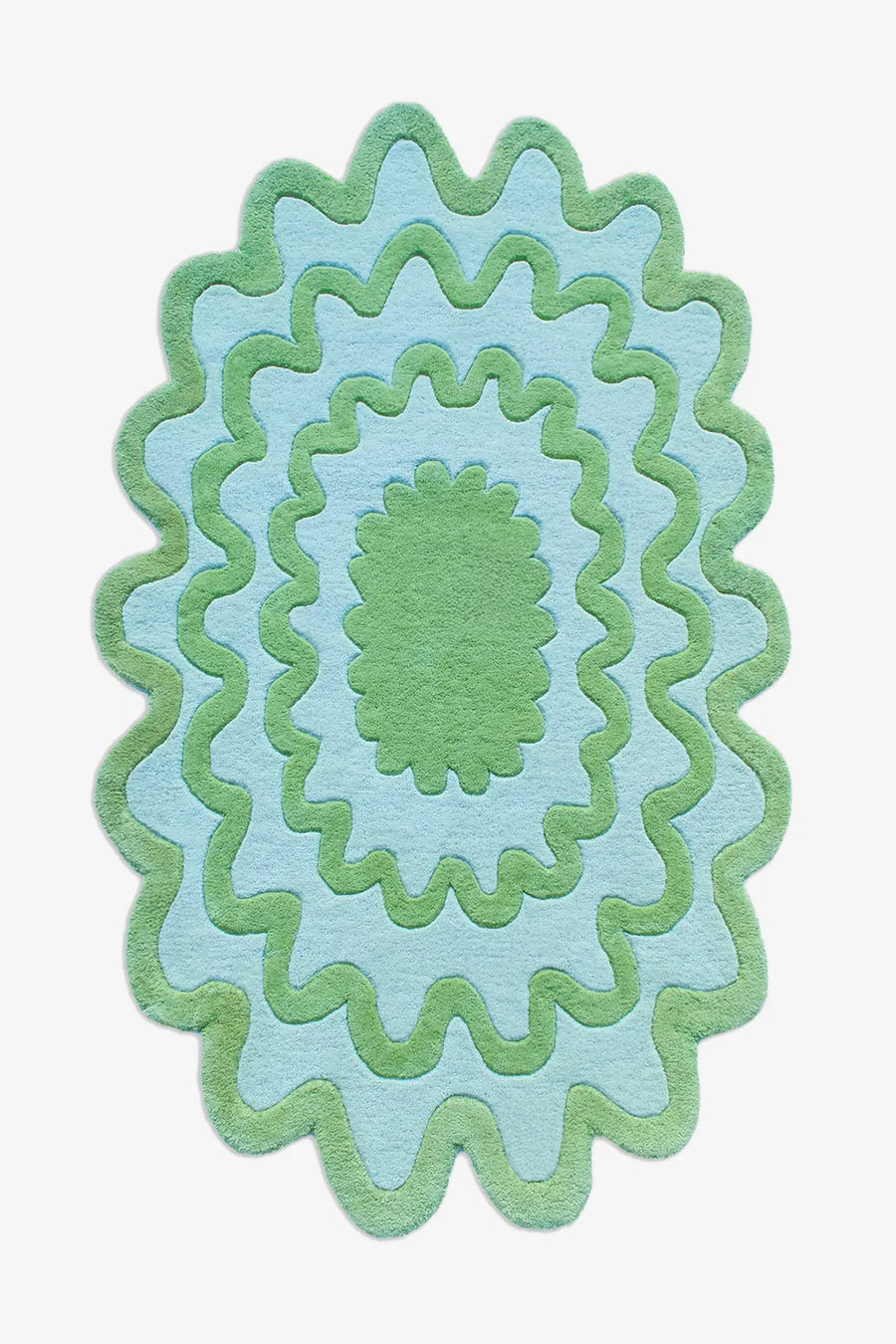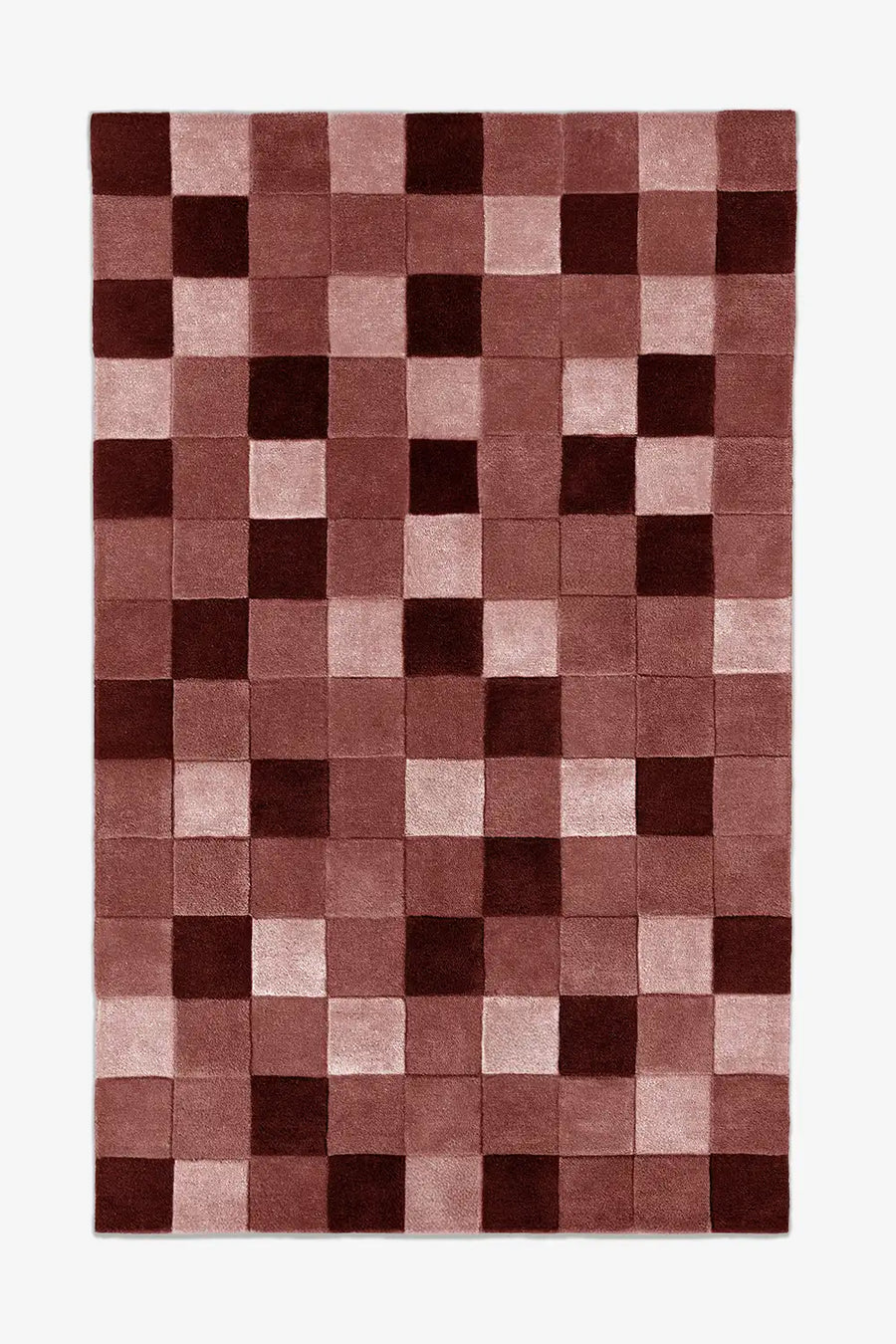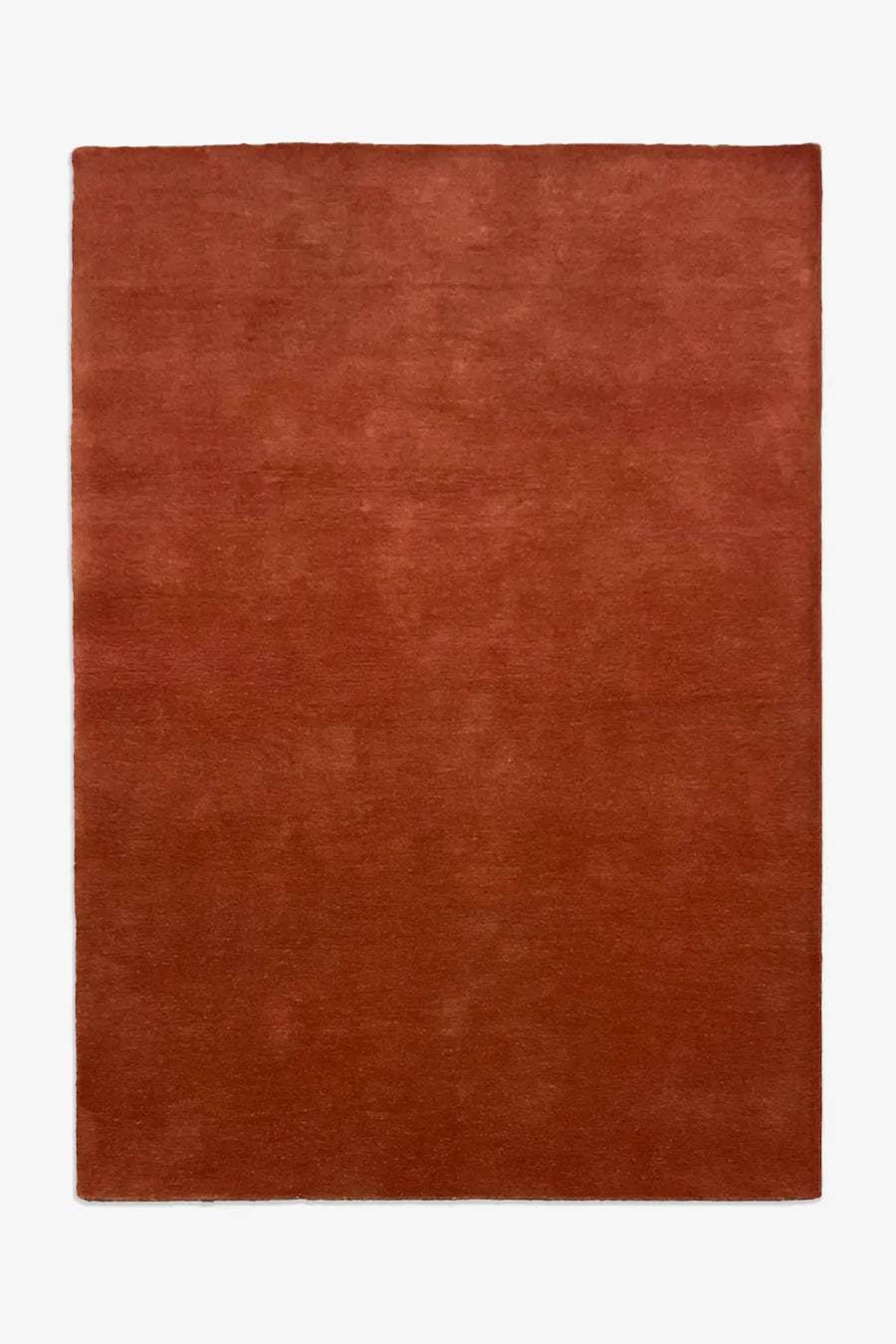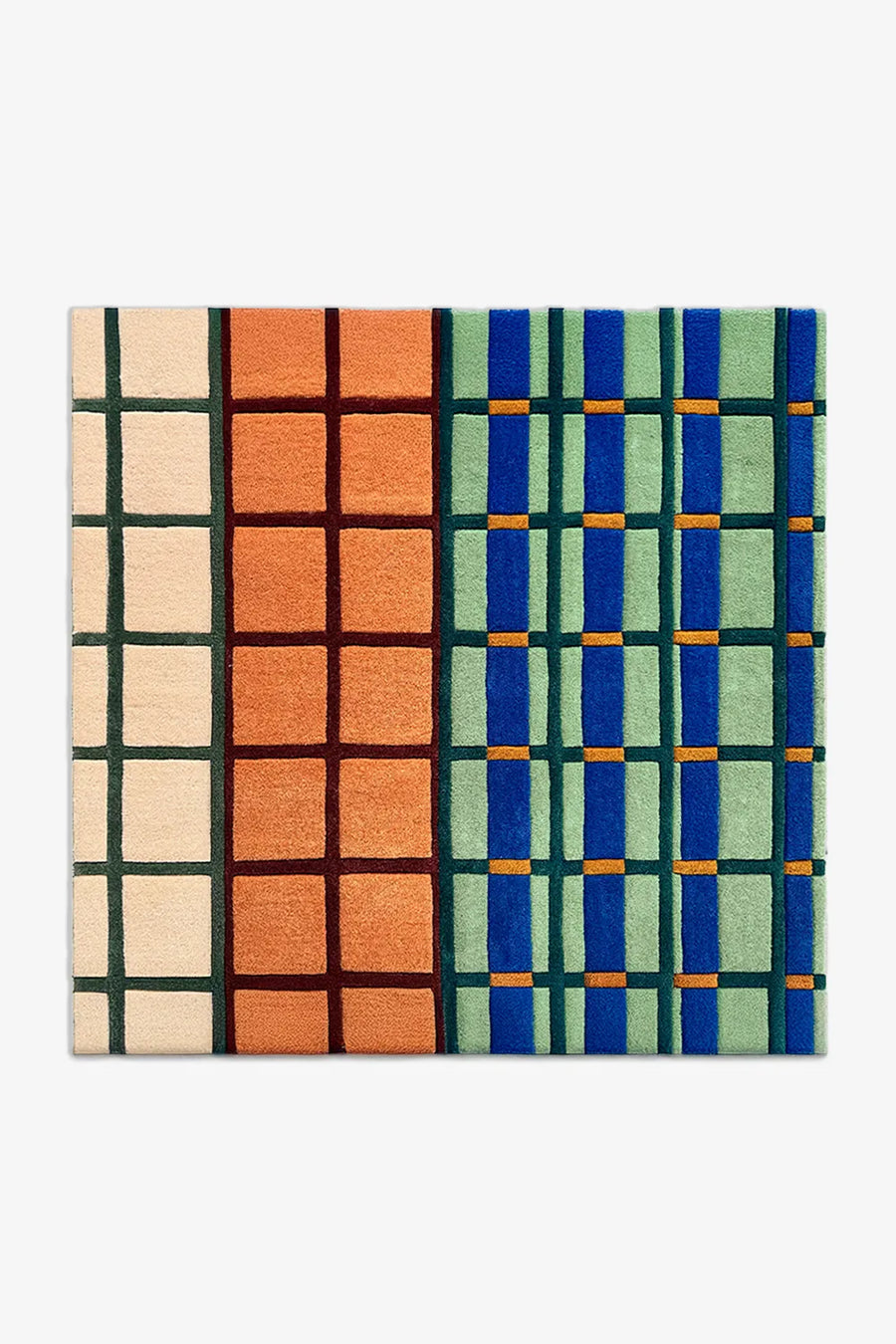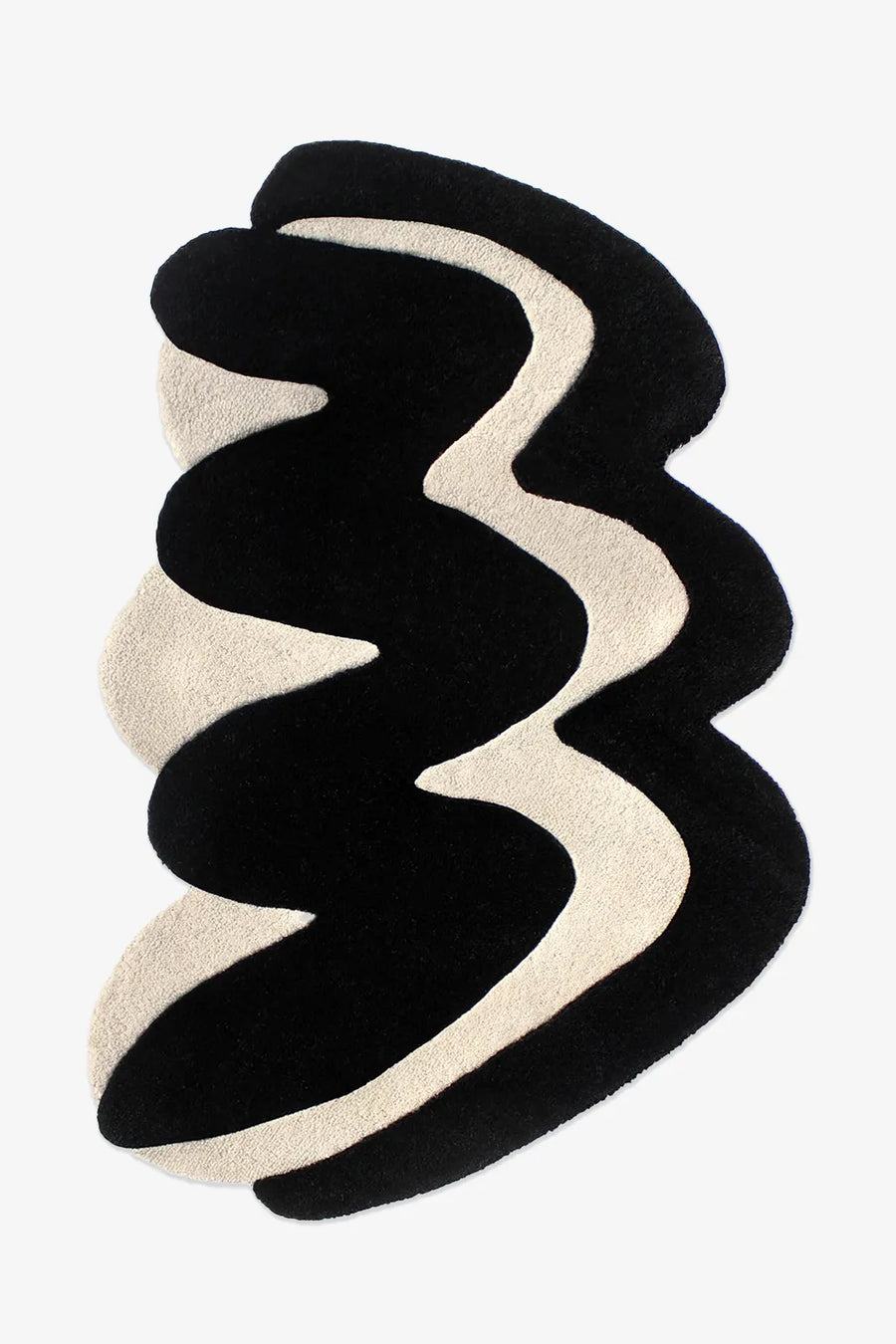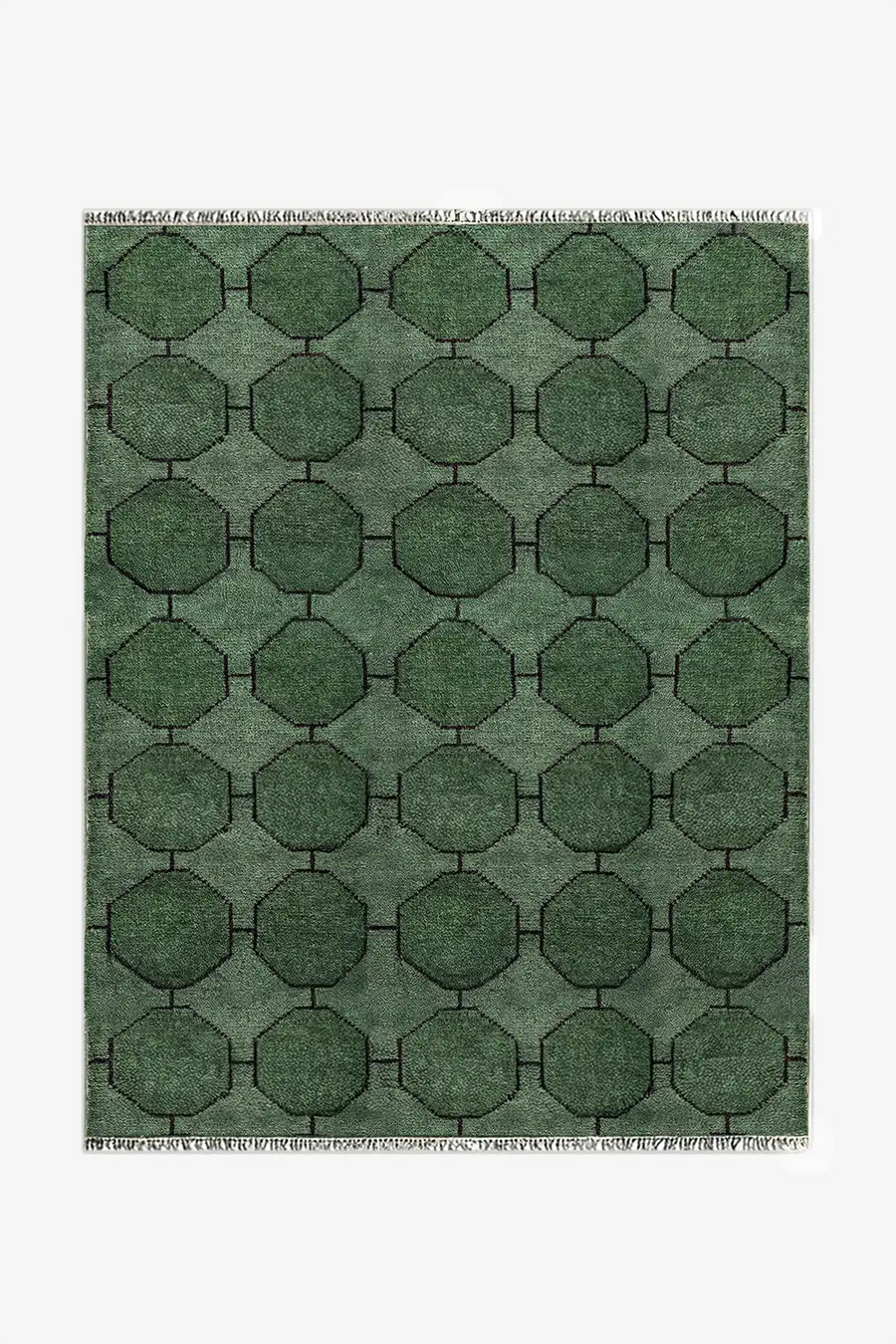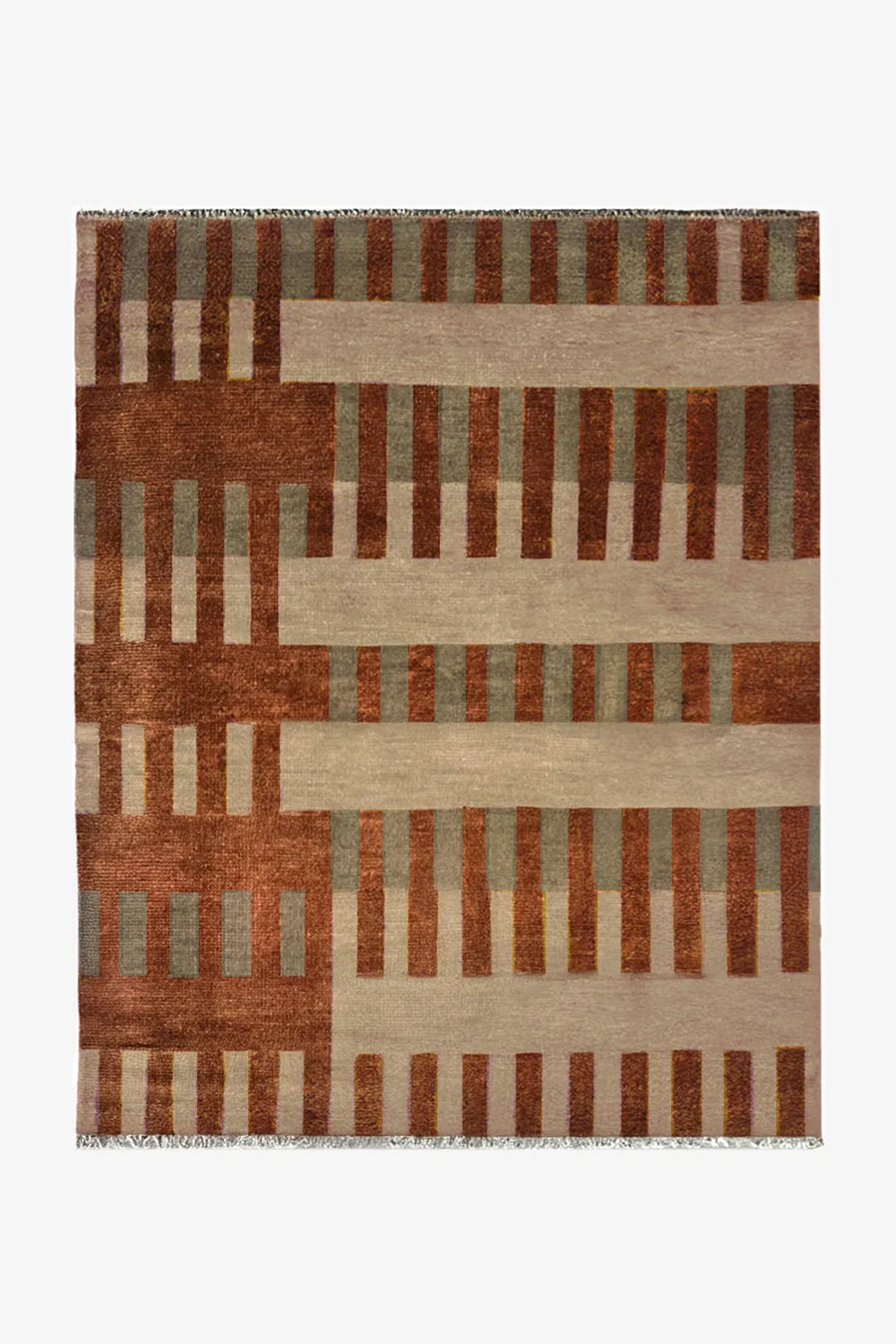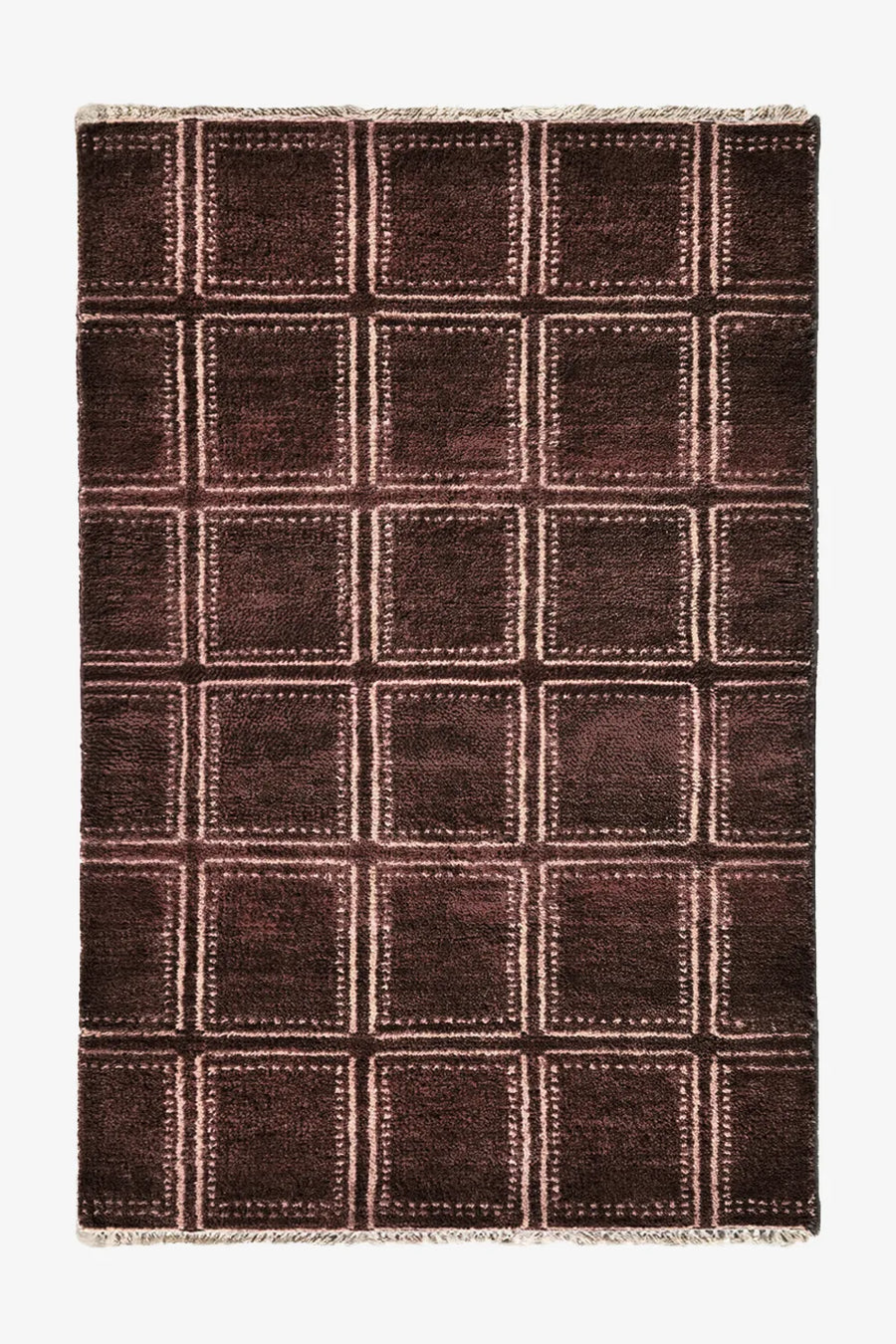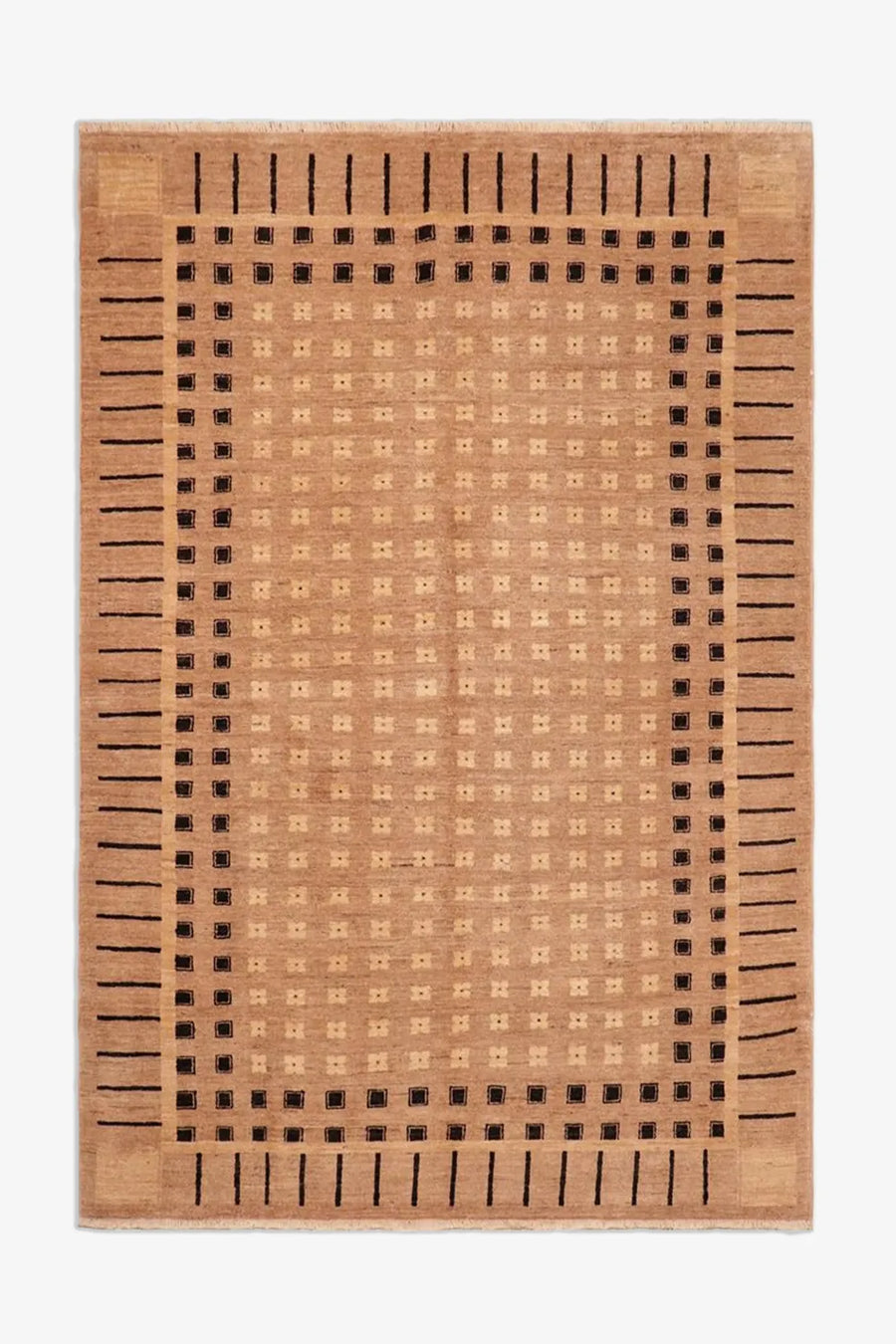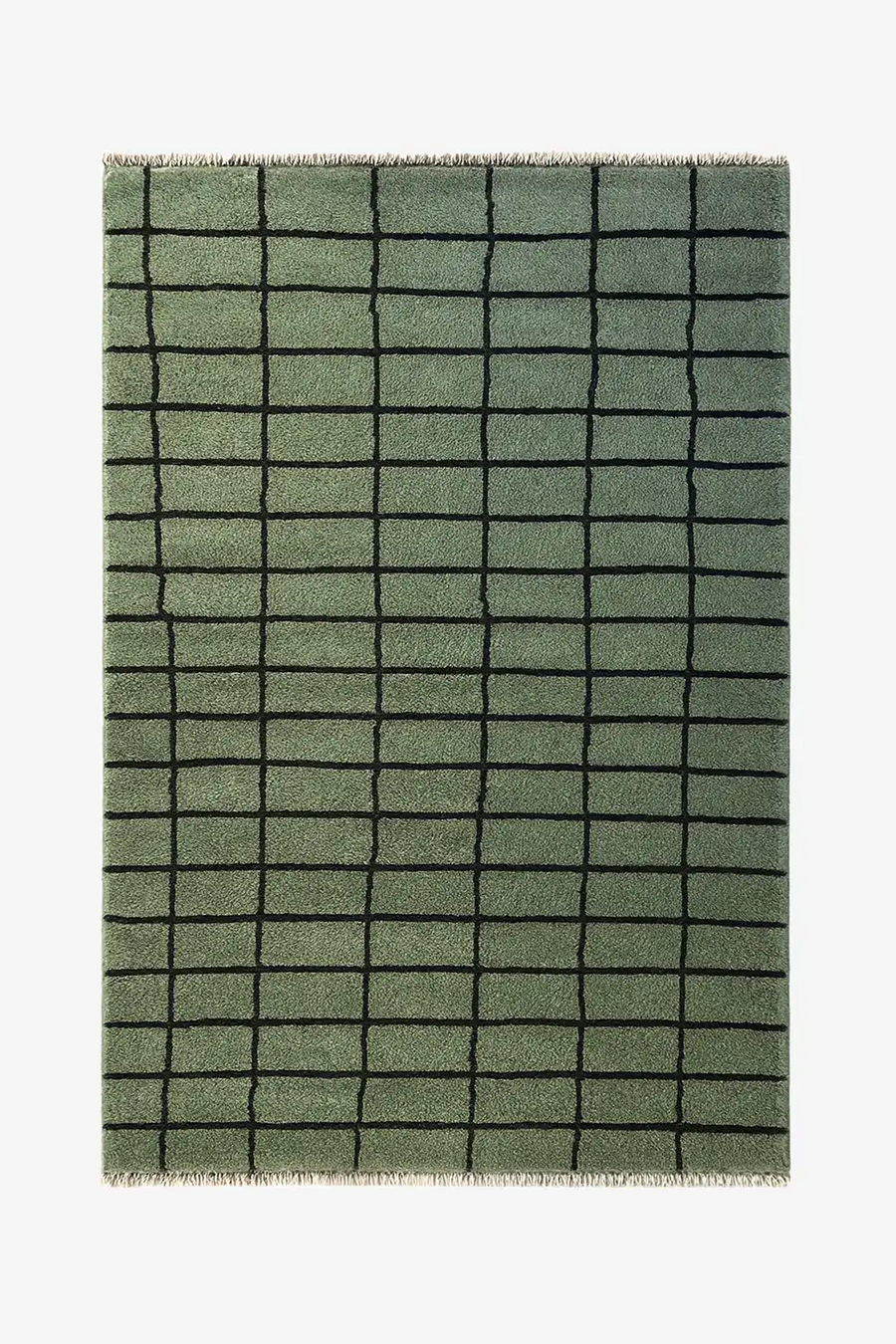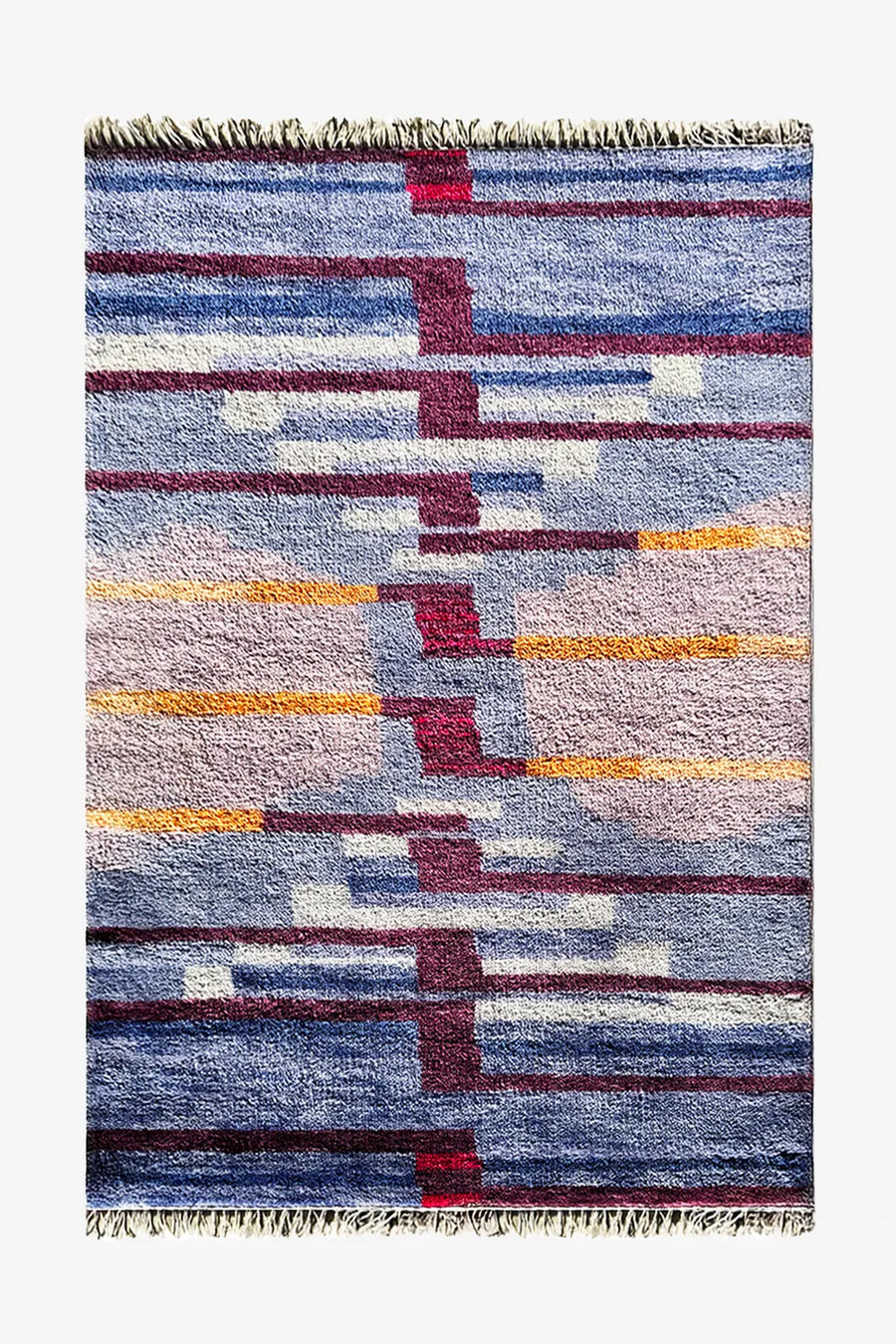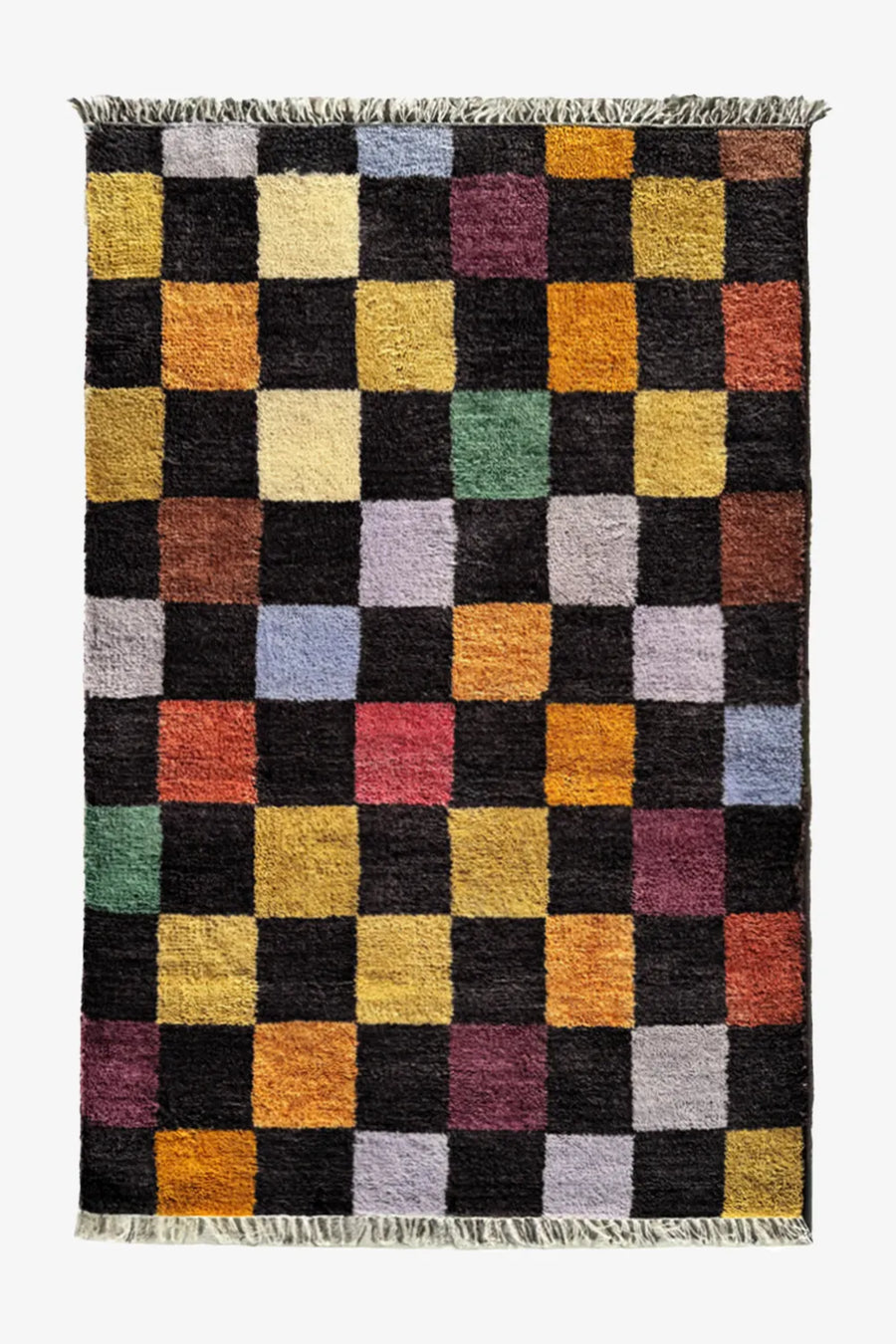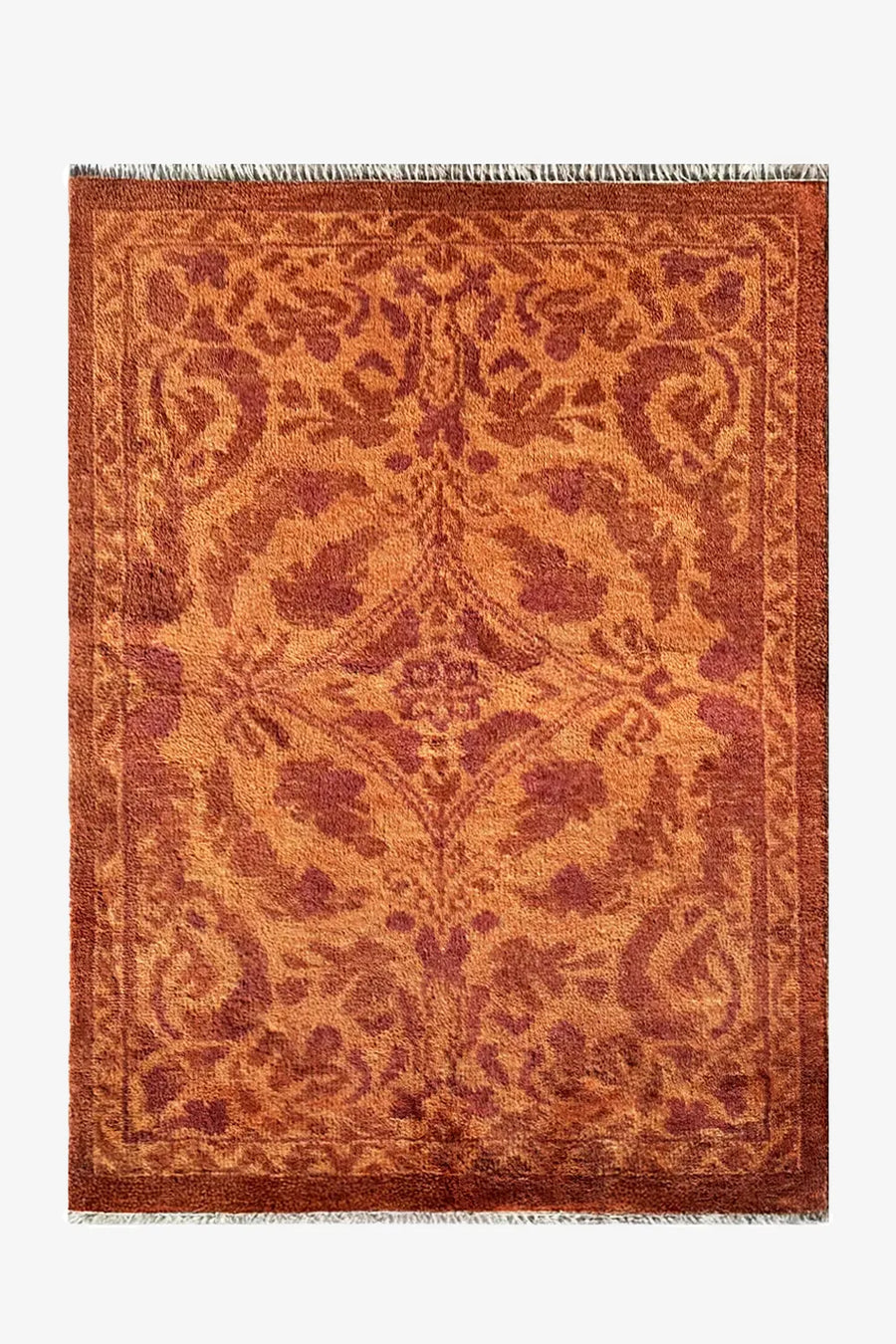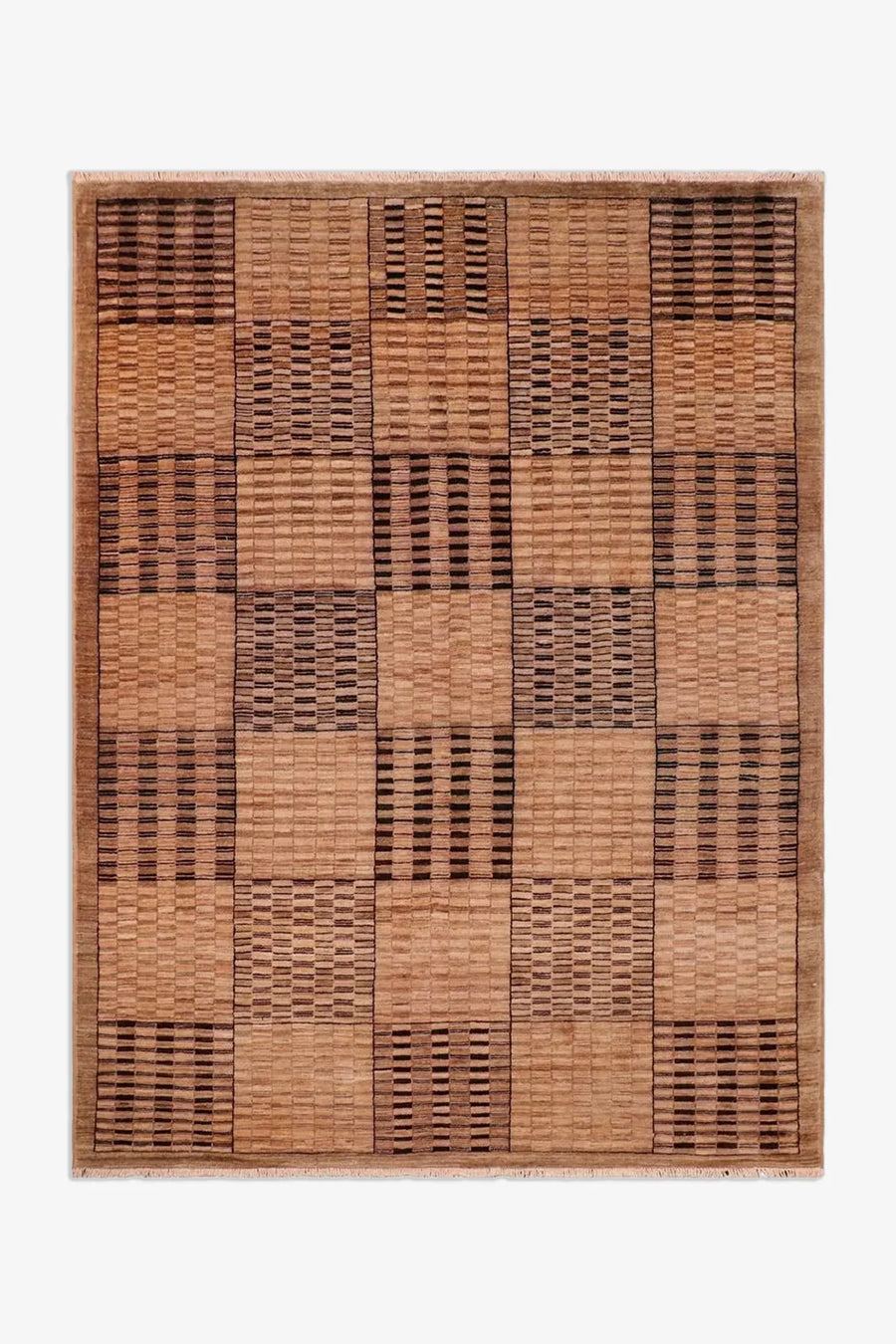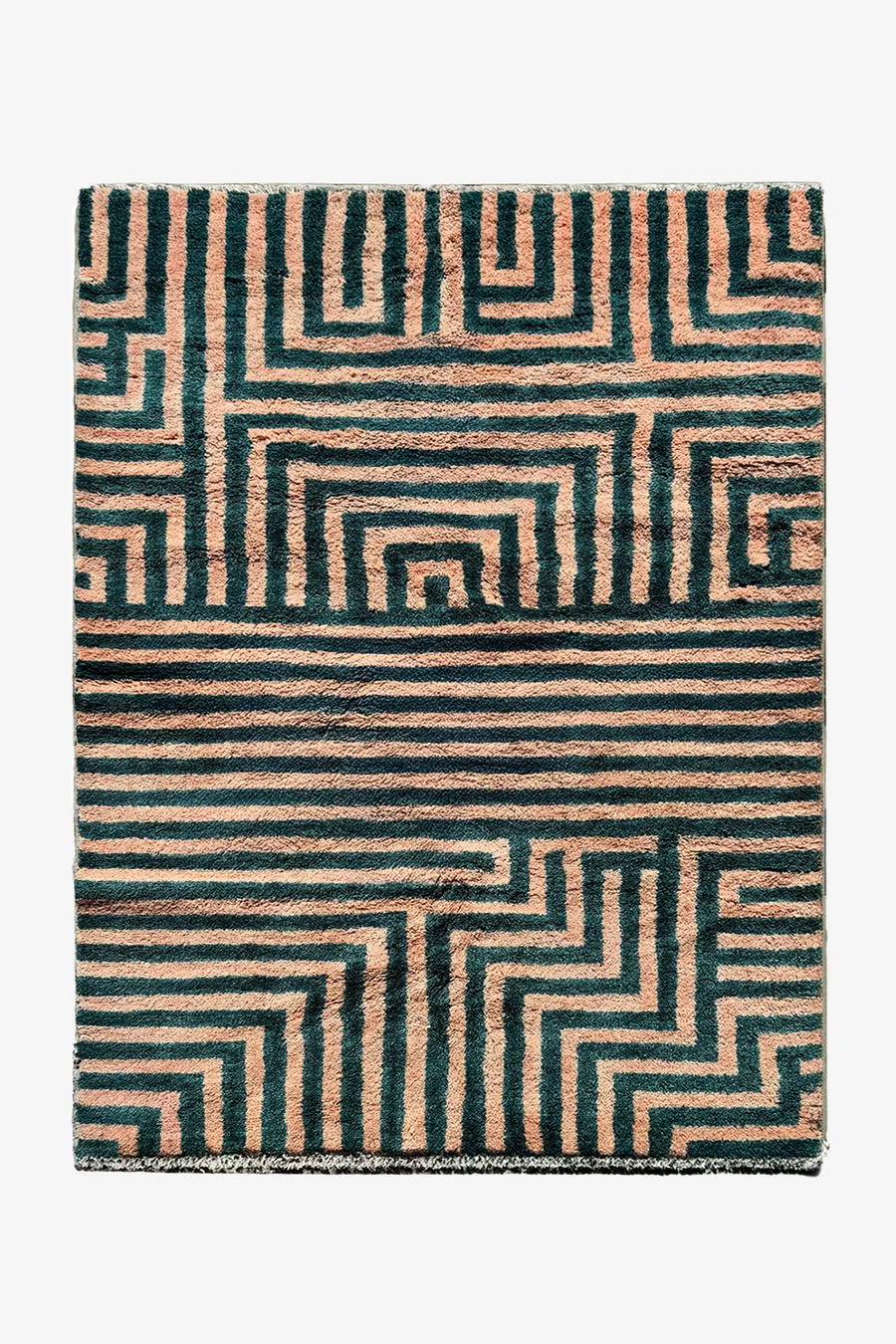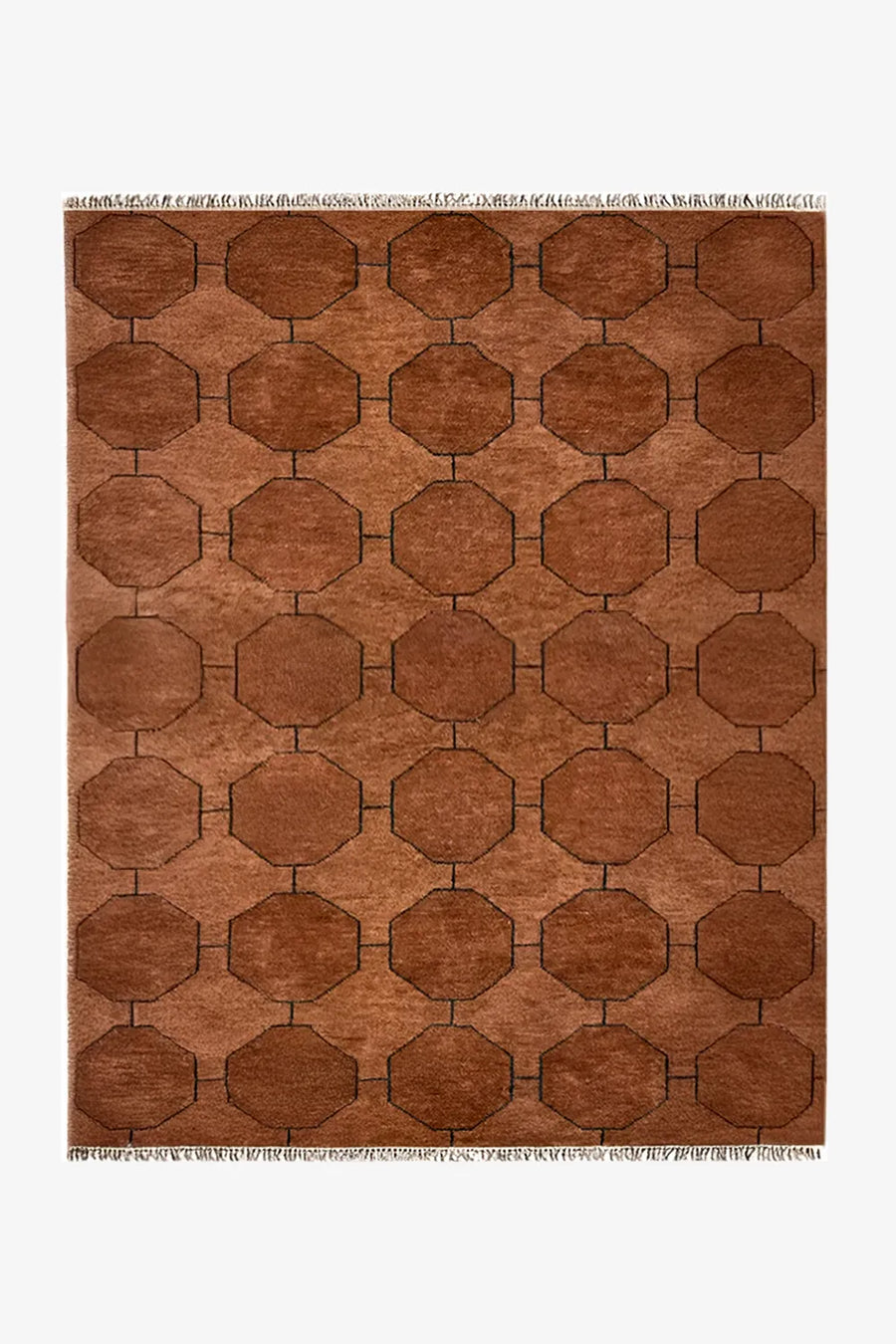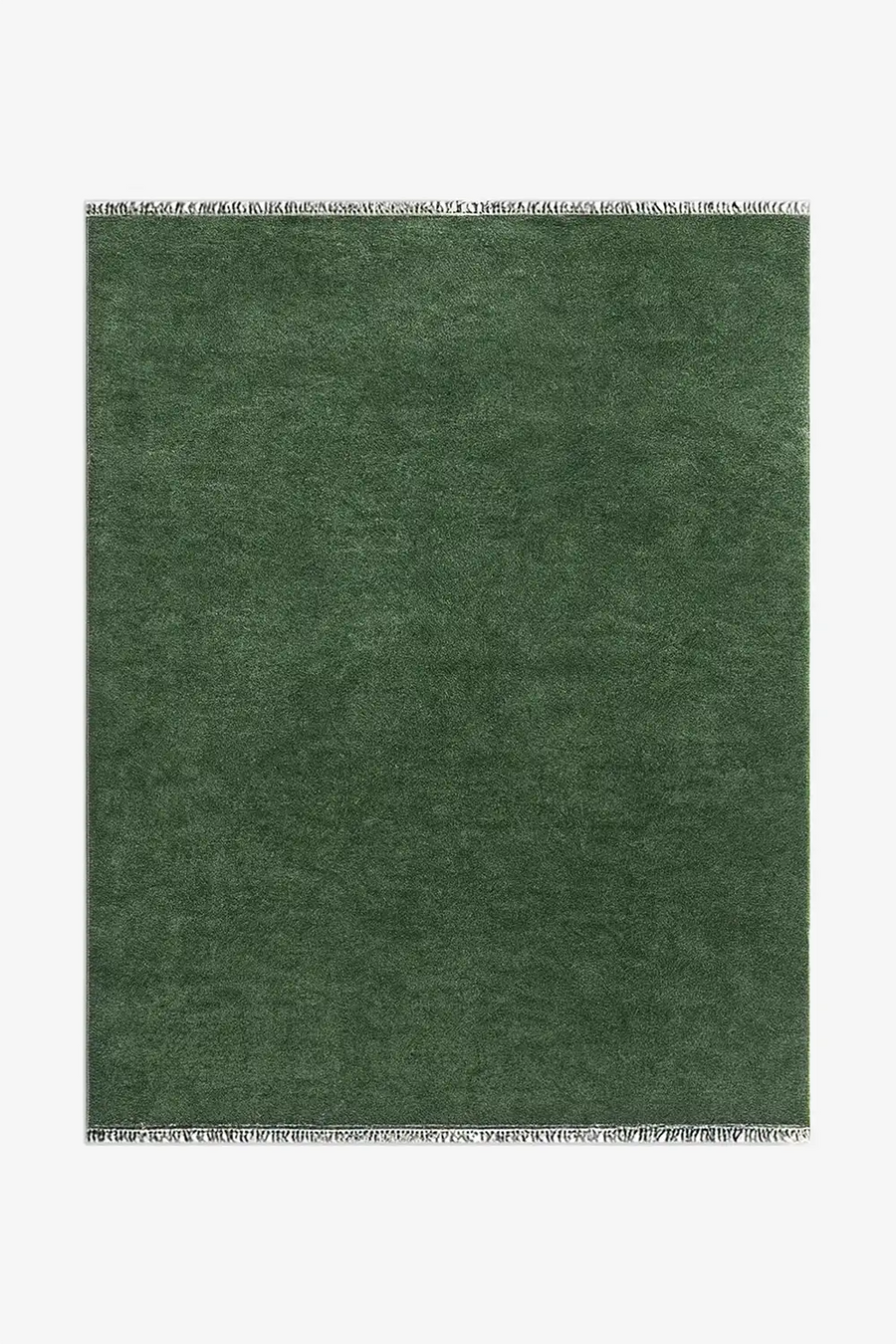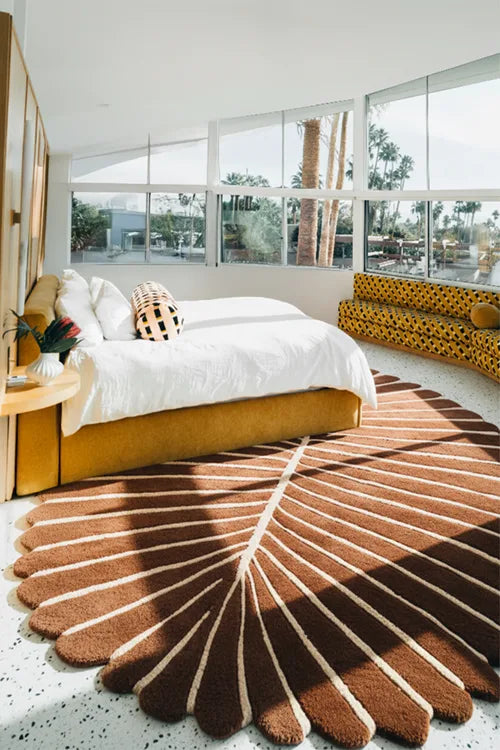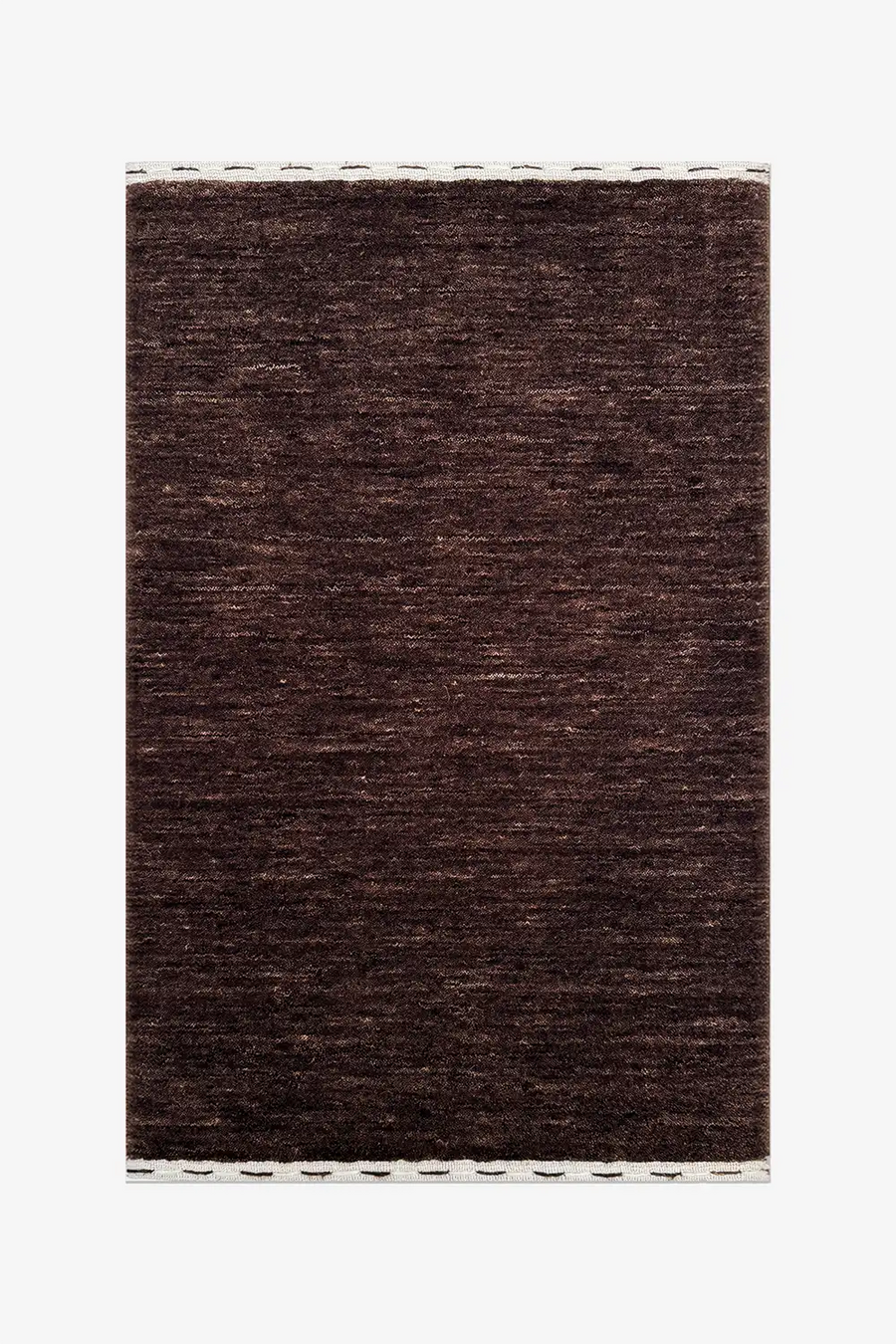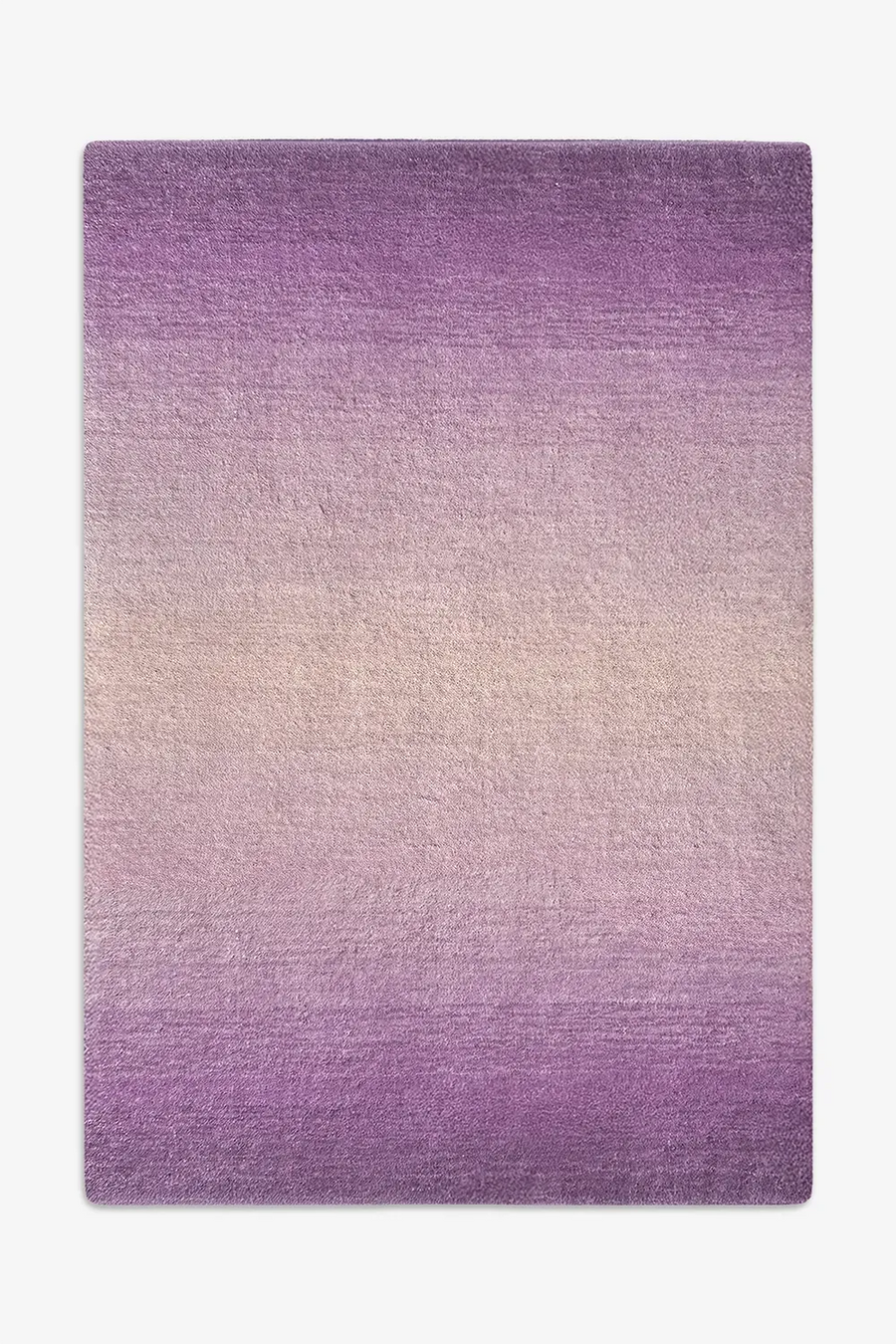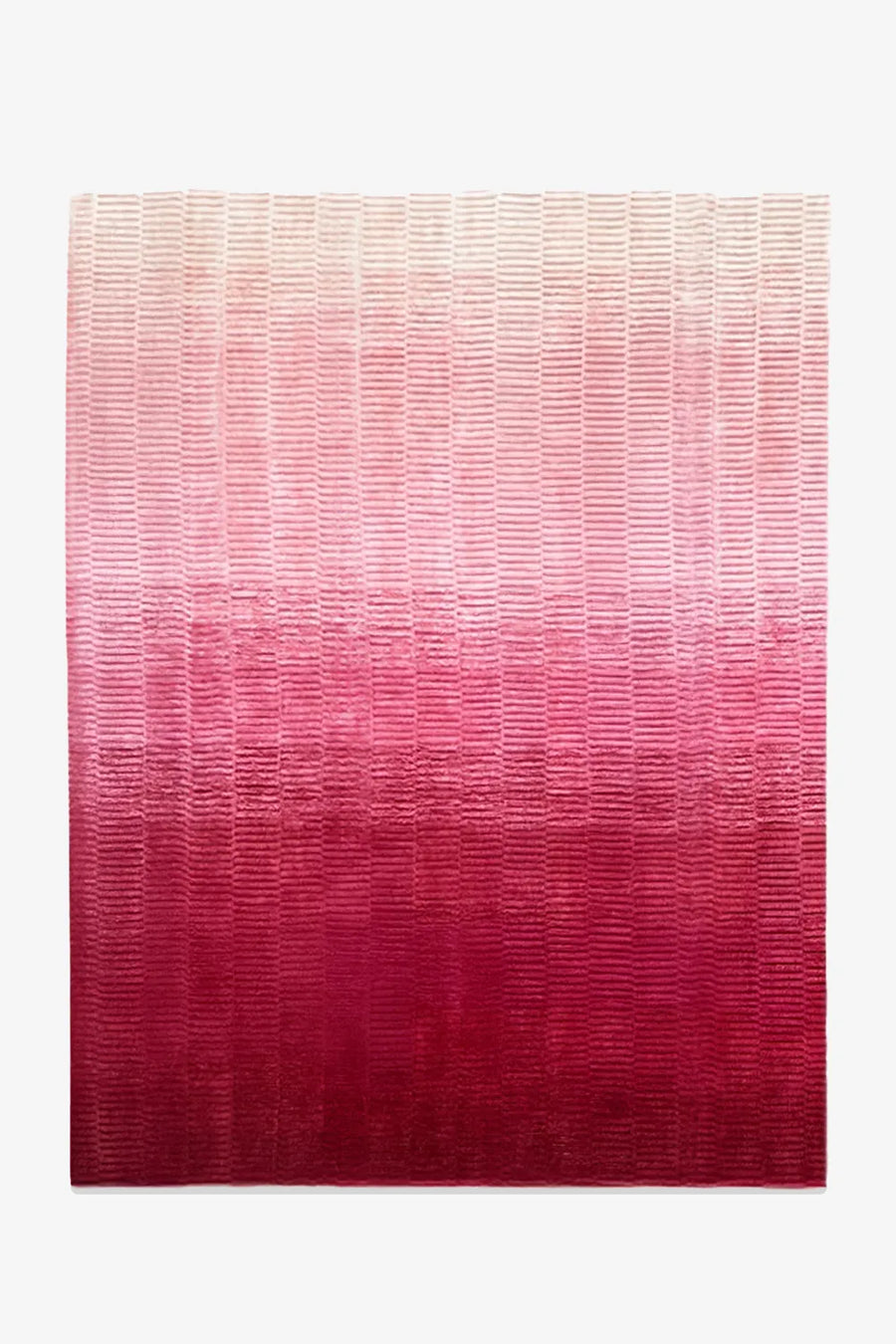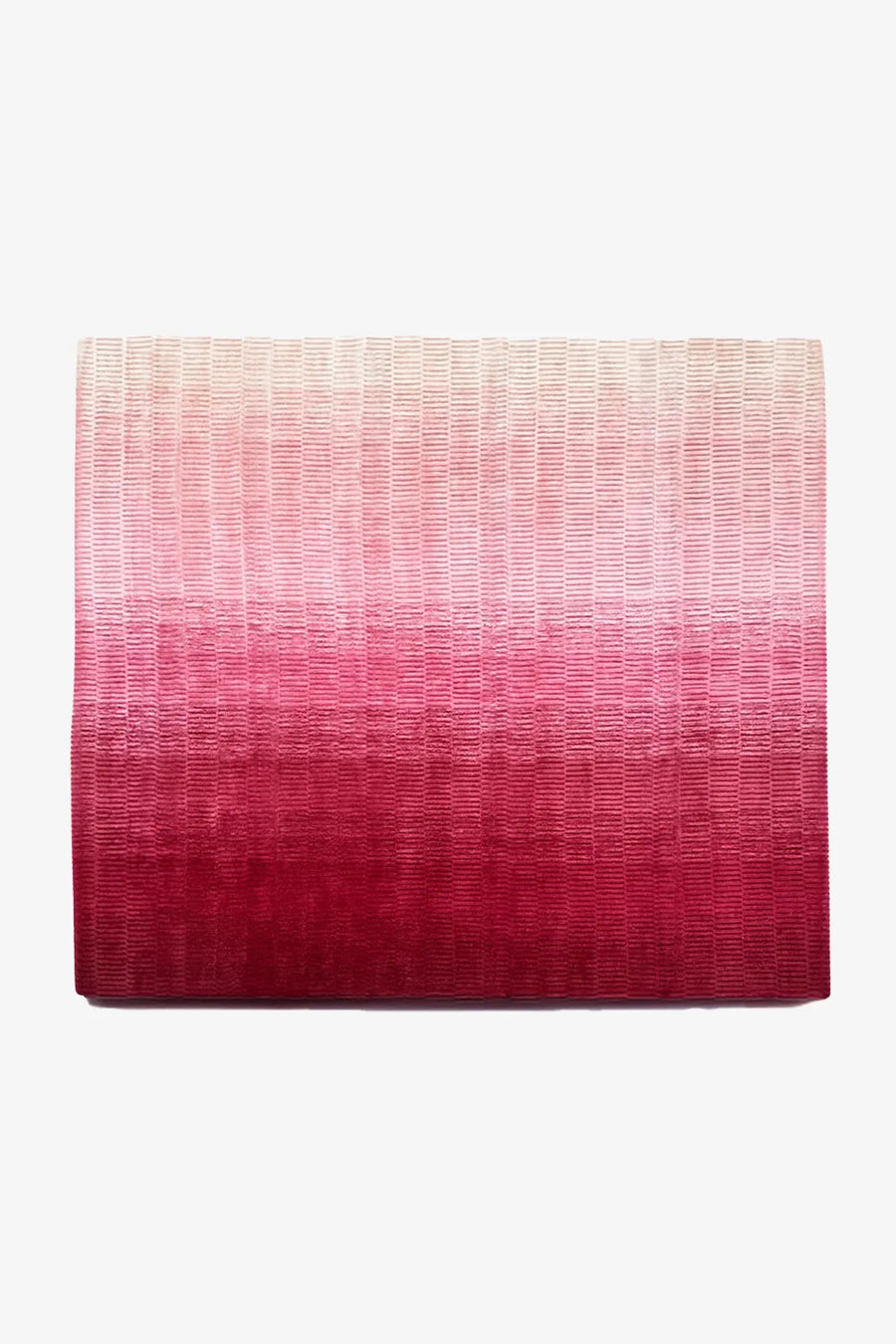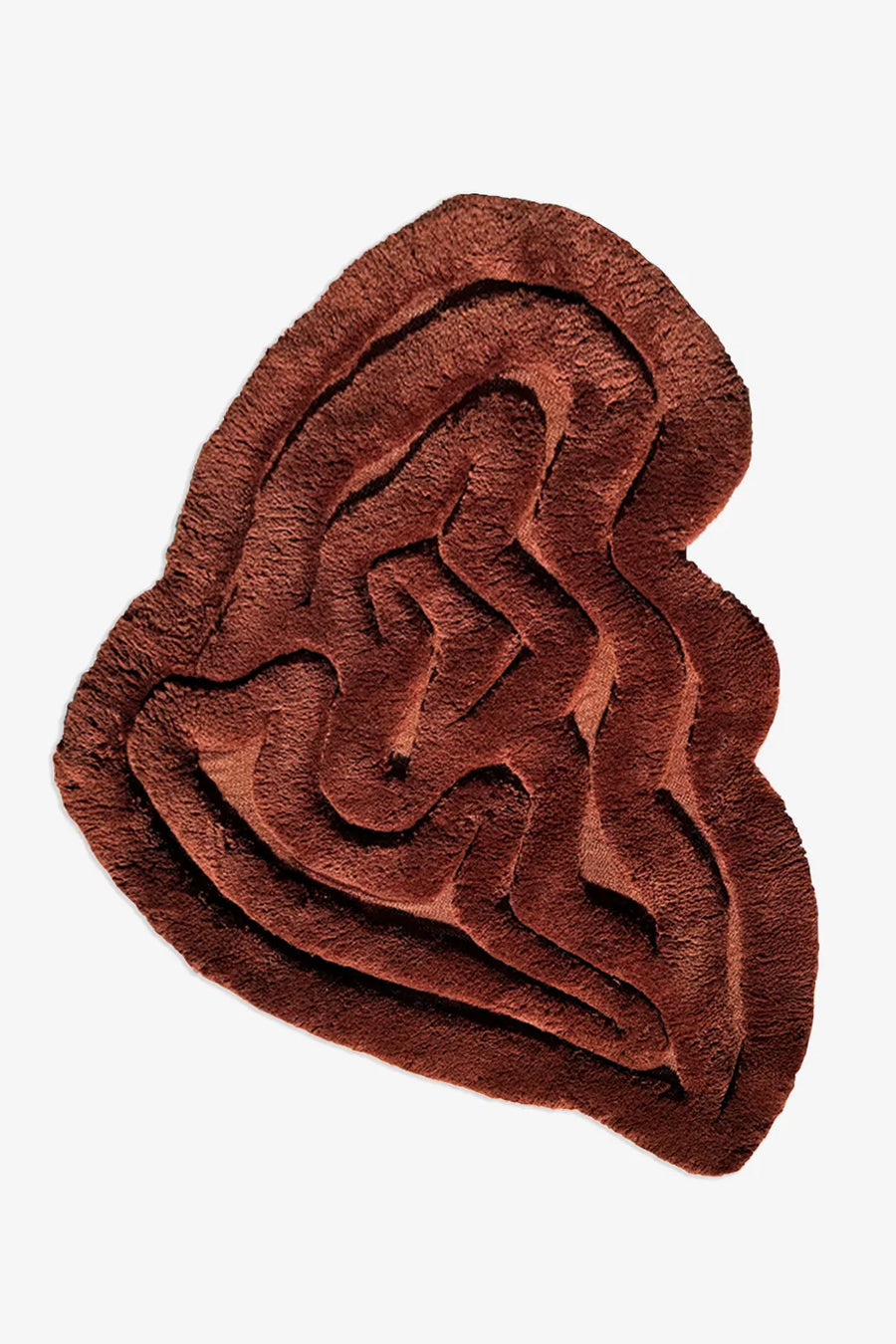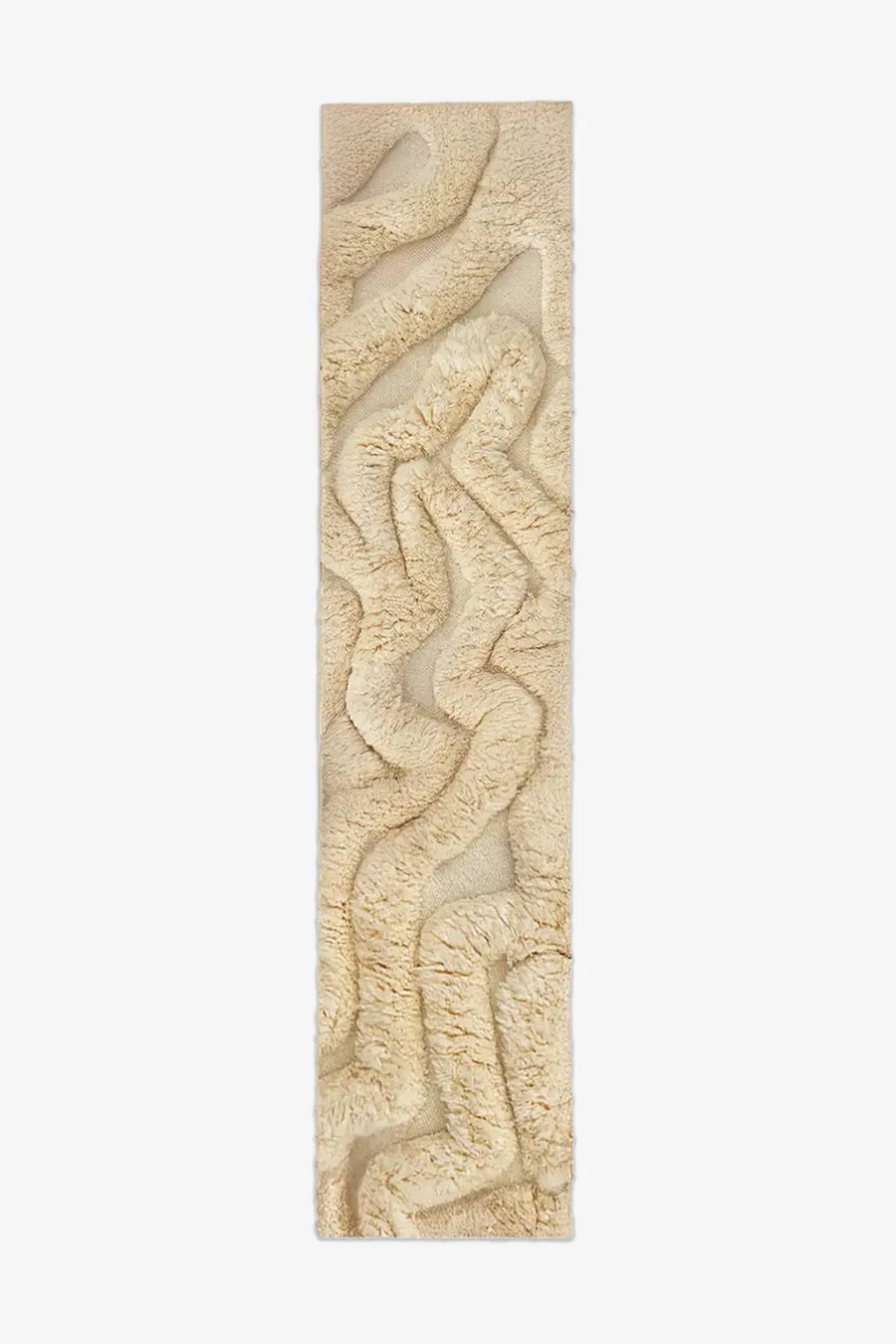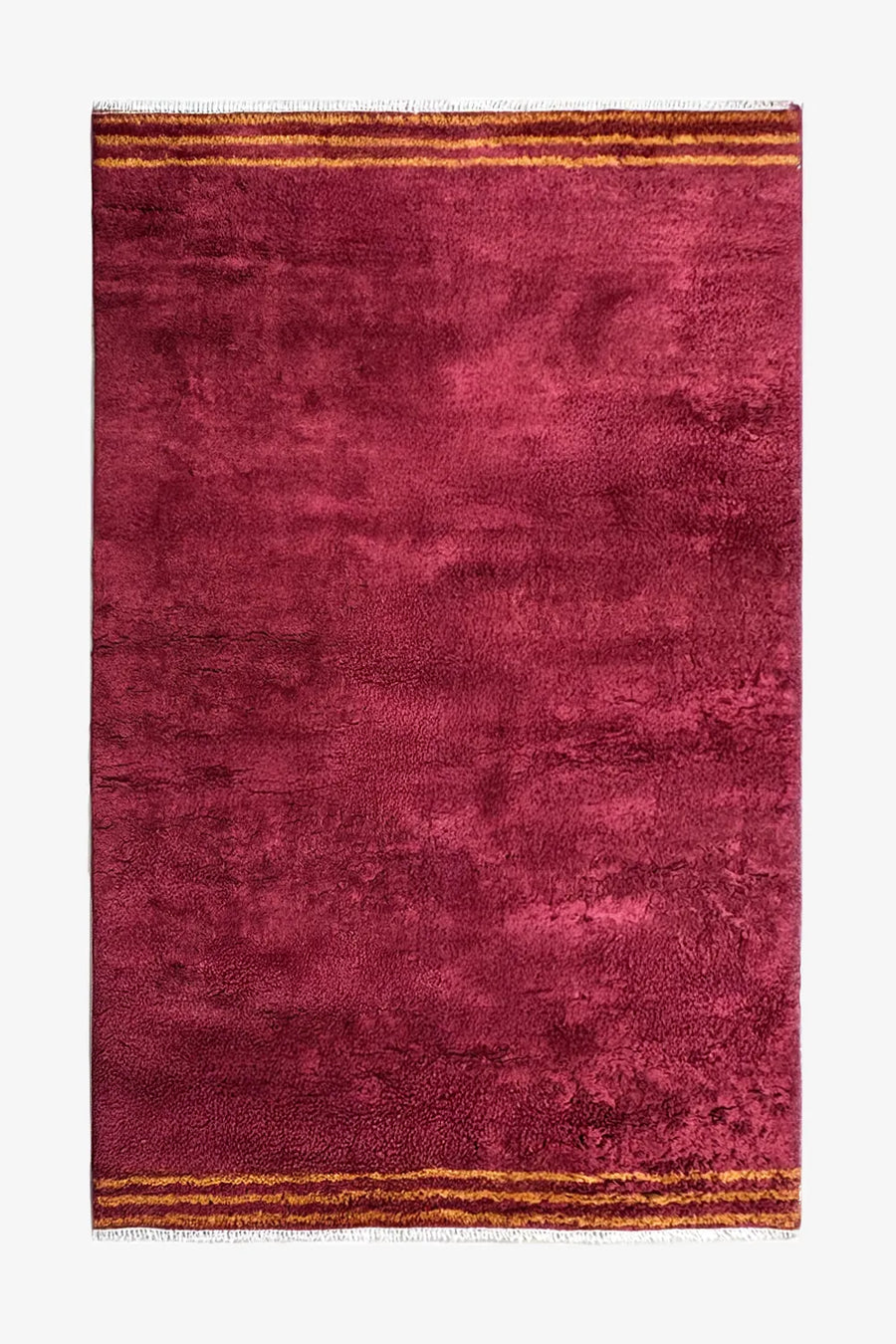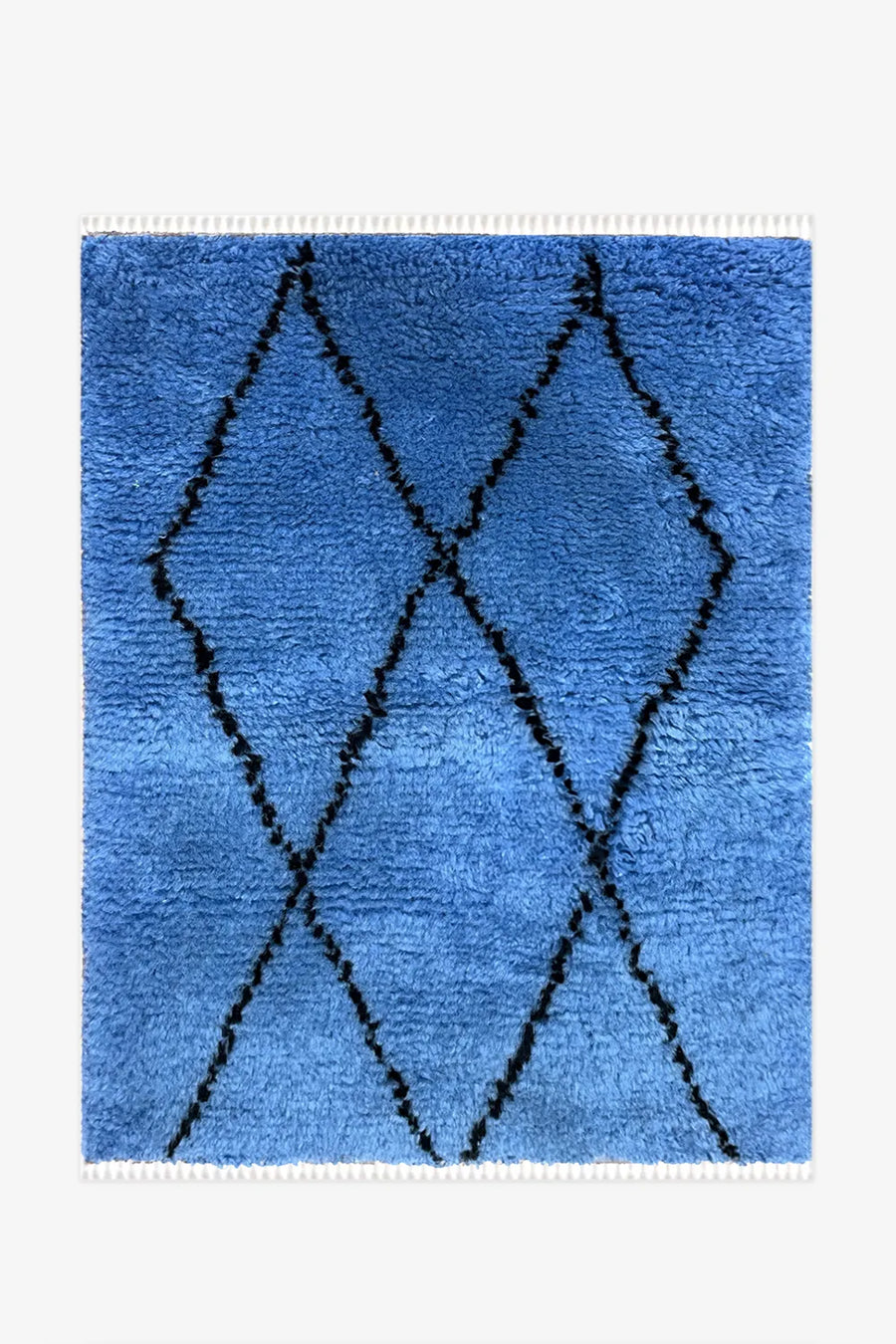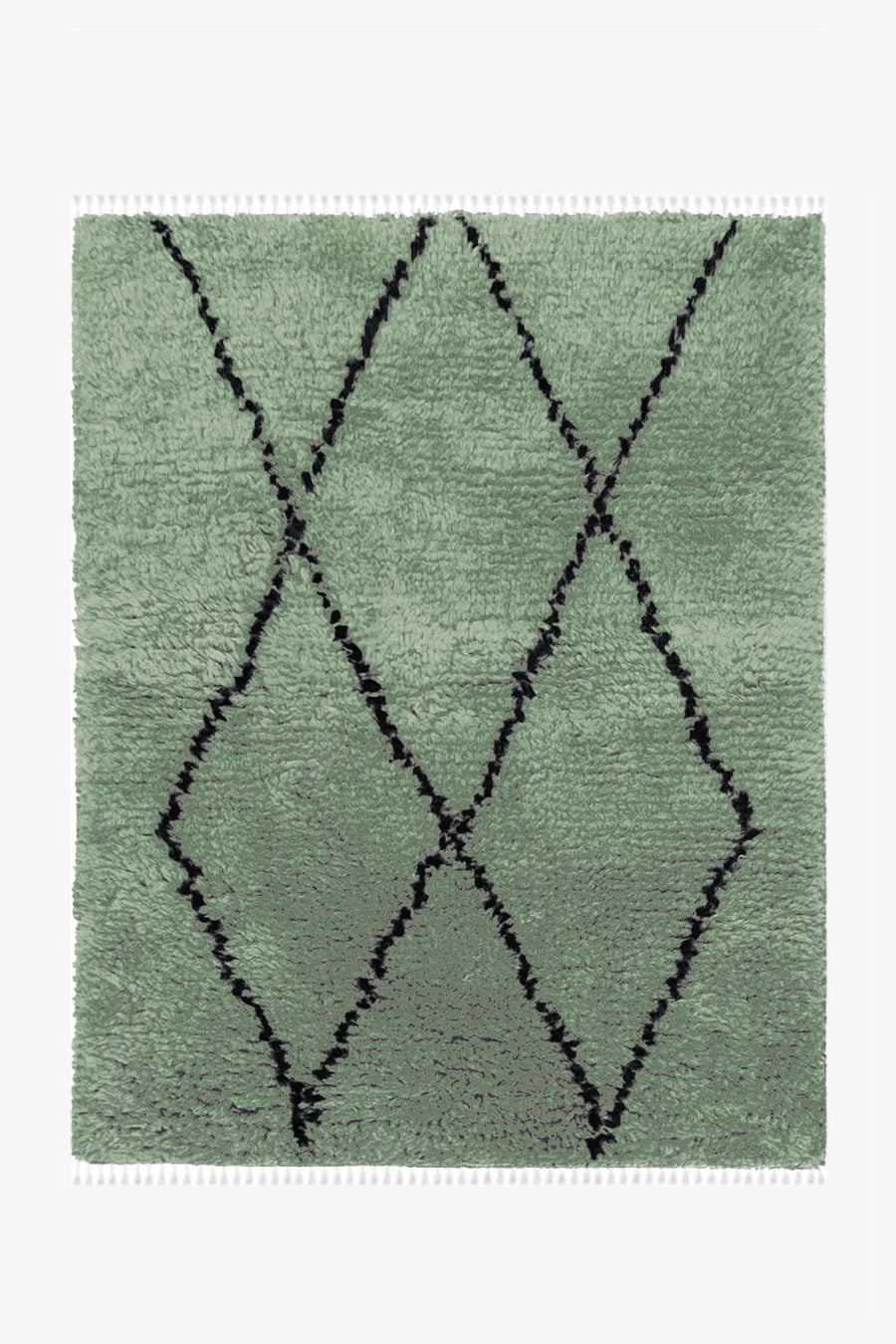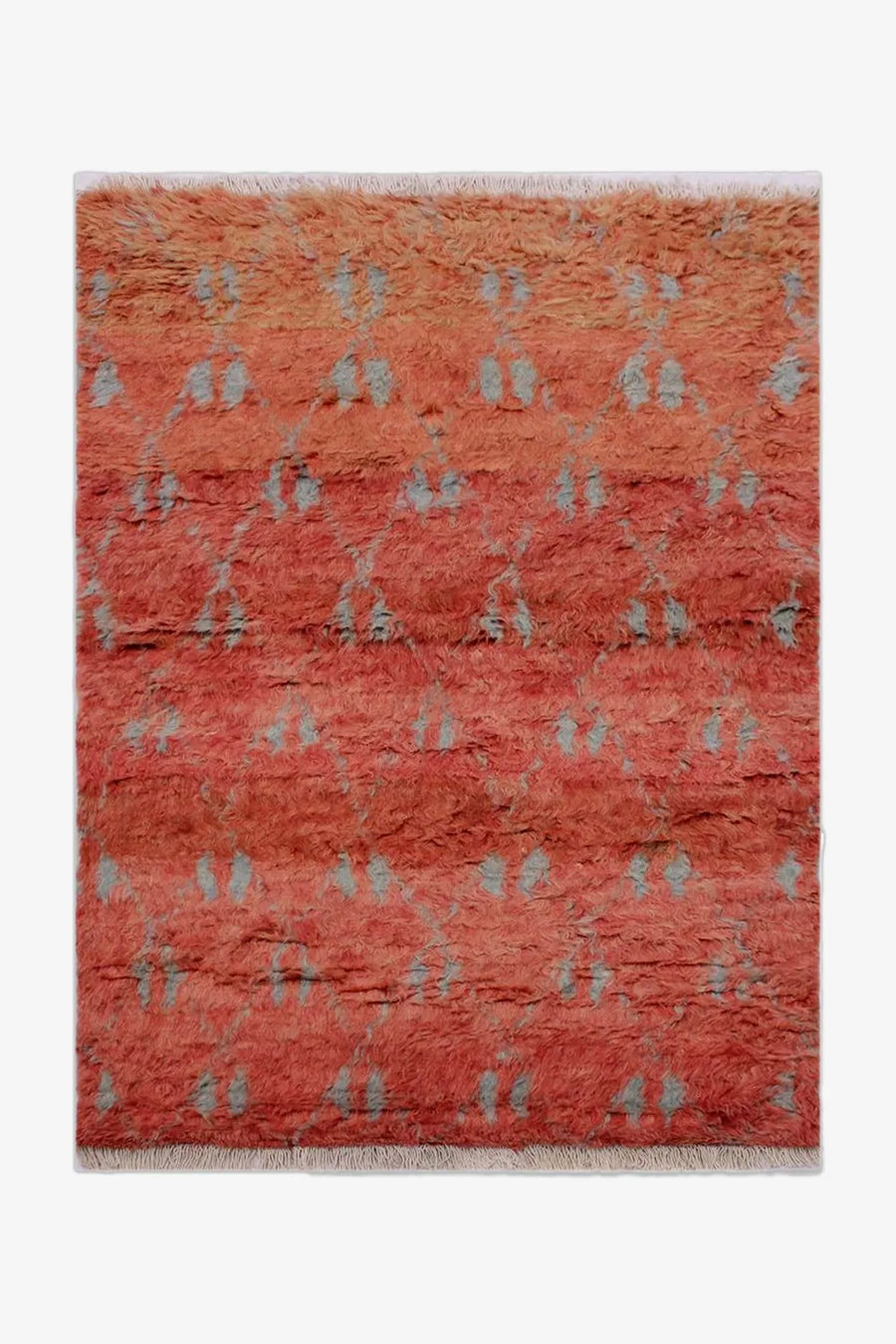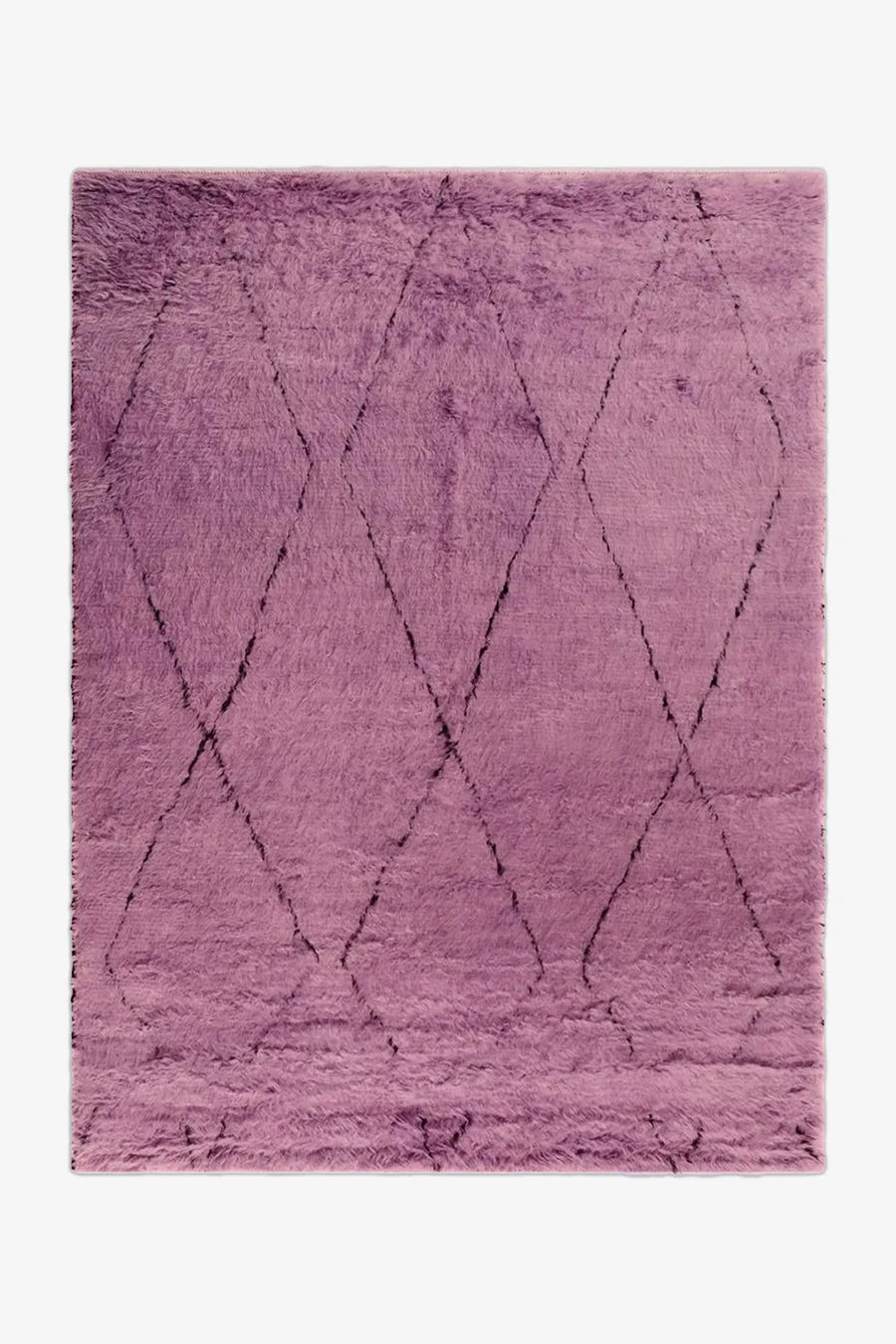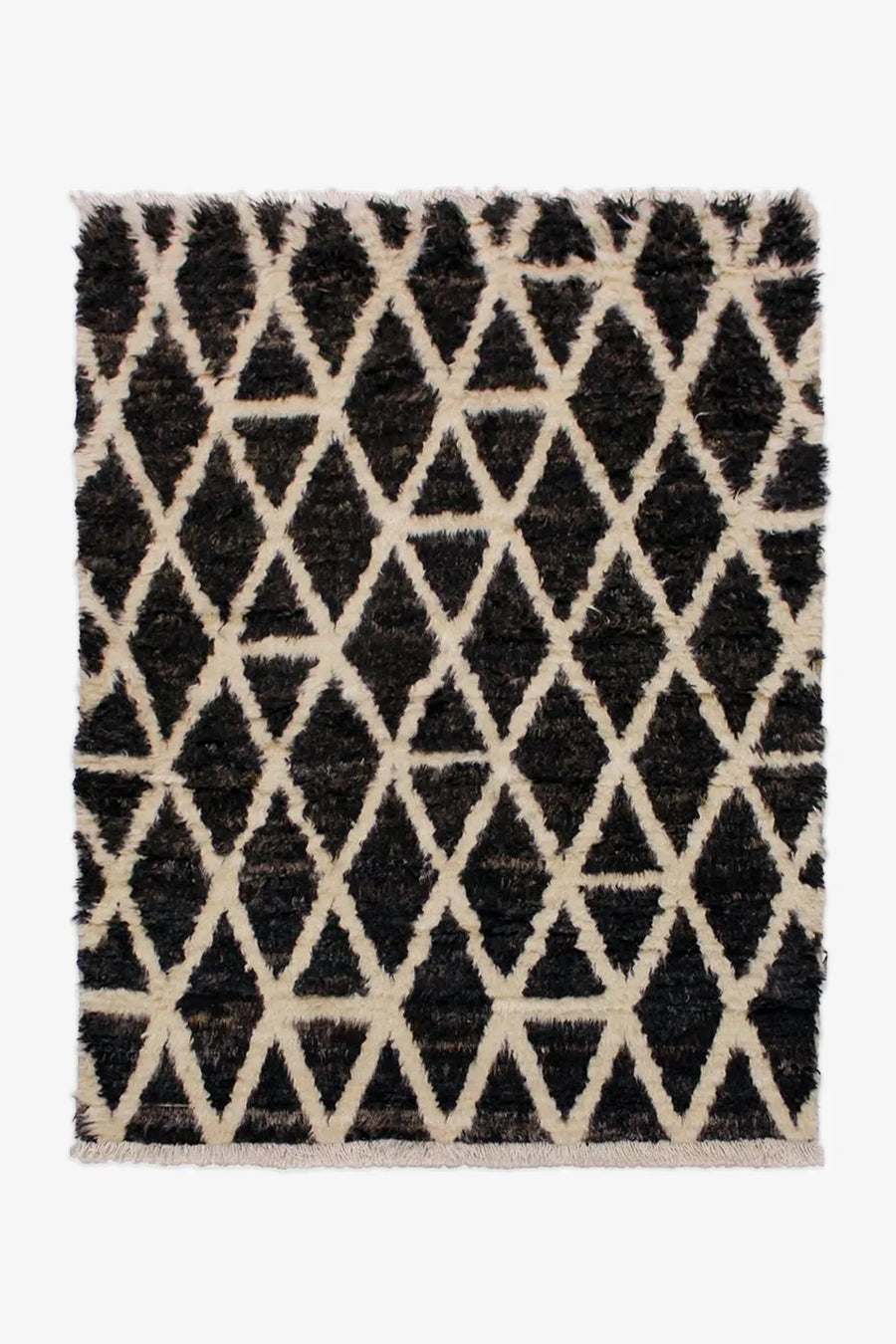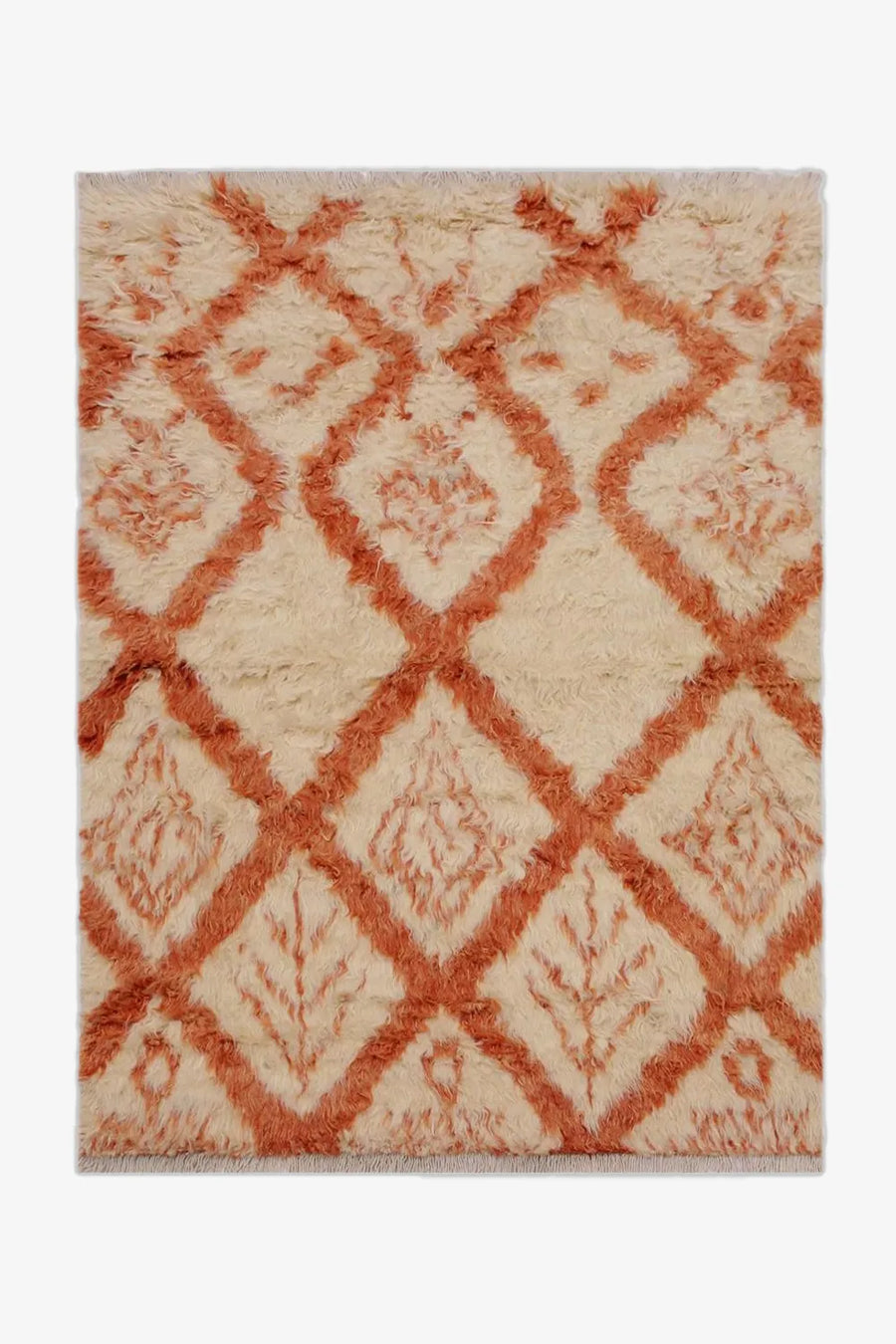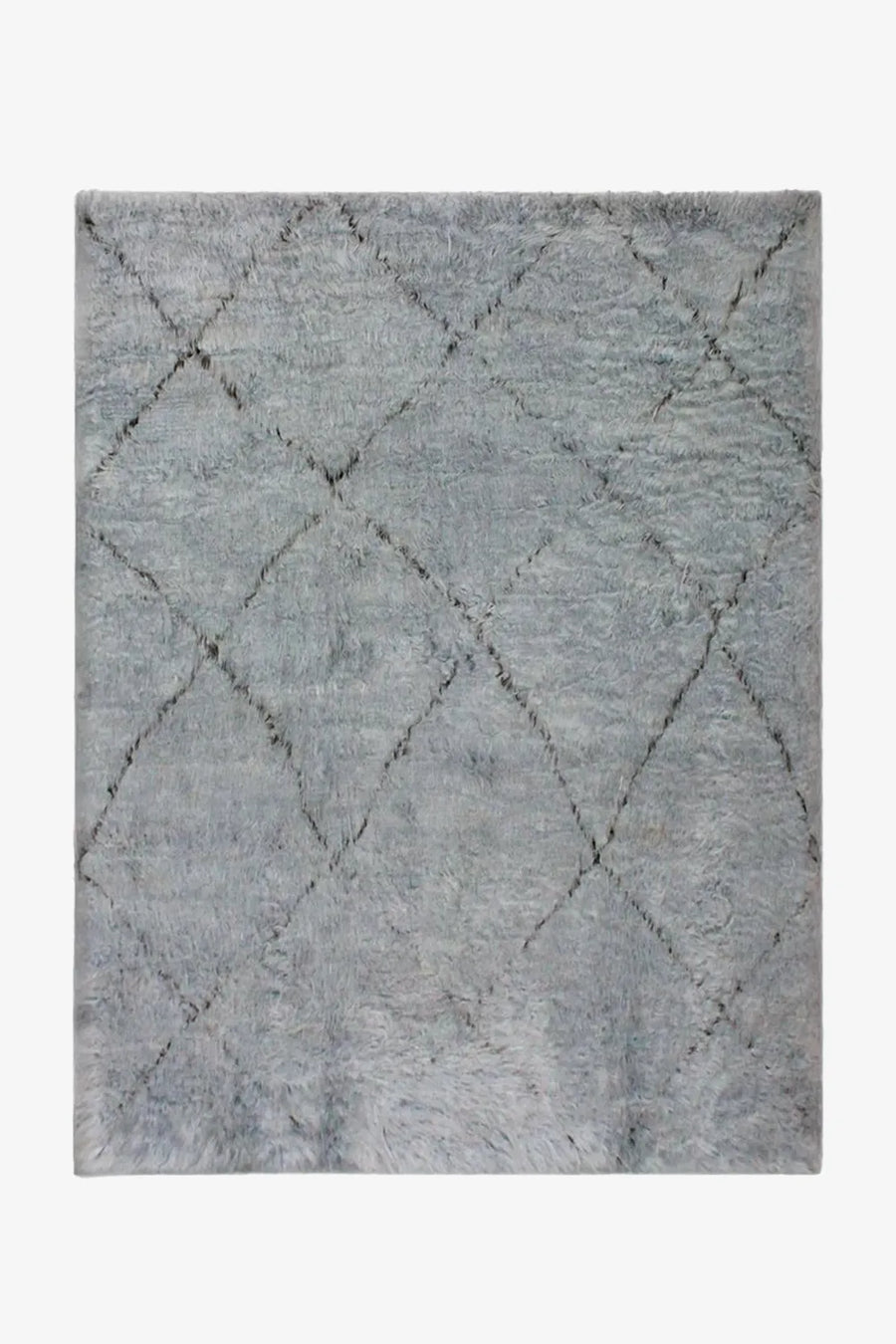Why Technique Isn't Just About Craftsmanship
Technique isn't just a technical detail—it's about how the rug performs in your life. A hand-tufted rug offers plush texture and works beautifully in bedrooms and low-traffic areas. A hand-knotted rug is incredibly durable and ages gracefully in high-traffic spaces. A flatweave is sleek, easy to clean, and perfect for layering or under dining tables. The way a rug is made determines how it feels underfoot, how long it lasts, and whether it's the right choice for your space. Understanding technique helps you make a smart investment rather than just a pretty purchase.
Hand-Tufted Rugs: Plush, Textural, Accessible
Hand-tufted rugs are made by punching yarn through a fabric backing using a tufting gun, then securing it with adhesive and a secondary backing. This process is faster than hand-knotting, which makes hand-tufted rugs more accessible while still maintaining artisan quality. The result is a soft, plush pile that feels luxurious underfoot. Hand-tufted rugs work beautifully in bedrooms, living rooms, and other low to medium-traffic areas. They're perfect for spaces where comfort matters more than extreme durability. Because they have a backing, they're not reversible, but that backing provides stability and helps the rug lie flat. Explore patterns and colors in hand-tufted construction.
Hand-Knotted Rugs: Durable, Timeless, Heirloom-Quality
Hand-knotted rugs are the gold standard of rug construction. Each knot is tied individually by hand on a loom—a process that can take weeks or months depending on the rug's size and complexity. The result is an incredibly dense, durable rug that can last for generations. Hand-knotted rugs are reversible because there's no backing—just the knotted foundation. They handle high-traffic areas beautifully and actually improve with age, developing a patina that adds character. Hand-knotted rugs are ideal for dining rooms, entryways, hallways, and anywhere you need a rug that can withstand heavy use. They're an investment, but one that pays off in longevity and beauty. Pair with timeless geometric or abstract designs.
Flatweave Rugs: Sleek, Easy to Clean, Versatile
Flatweave rugs are woven on a loom without any pile, creating a flat, smooth surface. They're lightweight, reversible, and incredibly easy to maintain. Flatweaves work beautifully under dining tables because chairs glide easily over them, and crumbs don't get trapped in pile. They're also perfect for layering—place a flatweave under a smaller pile rug for dimension and texture. Flatweave rugs suit modern, minimalist, and coastal aesthetics because they're clean-lined and unpretentious. They're durable, practical, and work in high-traffic areas. Flatweaves are ideal for people who want a no-fuss rug that still looks intentional. Explore striped and geometric flatweaves.
Texture and Technique: What to Expect Underfoot
Technique determines texture. Hand-tufted rugs are soft and cushioned—you sink into them slightly when you walk. This makes them cozy and inviting, perfect for spaces where you want comfort. Hand-knotted rugs are dense and firm. They have substance and weight. They feel substantial underfoot and don't shift or bunch. Flatweave rugs are smooth and flat, almost like a heavy fabric. There's no plush softness, but there's also no maintenance hassle. Consider how you use the space. Do you want barefoot comfort or practical durability?
Durability and Longevity by Technique
Hand-knotted rugs are the most durable. They can handle decades of heavy foot traffic and are often passed down through generations. Hand-tufted rugs are durable for everyday use but won't last as long in high-traffic areas. The adhesive backing can eventually wear down, and the pile may flatten over time. Flatweave rugs are highly durable because there's no pile to wear down—they age gracefully and can handle heavy use. If you're looking for a rug that will last 20+ years, invest in hand-knotted. If you want something beautiful for 5-10 years, hand-tufted is a great choice. For easy maintenance and longevity, flatweave delivers.
Matching Technique to Room Function
Think about how you use the space. Bedrooms benefit from the softness of hand-tufted rugs—stepping onto plush pile first thing in the morning feels luxurious. Living rooms with heavy foot traffic or pets are better suited for hand-knotted rugs that can handle wear. Dining rooms work beautifully with flatweave or hand-knotted rugs because chairs slide easily and spills are easier to clean. Entryways and hallways need durability, so hand-knotted or flatweave is best. Use our shop by room guide to see technique in context.
How Technique Affects Rug Shape and Pattern
Technique influences what shapes and patterns are possible. Hand-tufted rugs can achieve complex, organic shapes like scalloped edges and flowing forms because the tufting gun allows for precision. Hand-knotted rugs are typically more structured—rectangles, rounds, and runners—because of the loom's limitations. Flatweaves are inherently geometric and structured. The weaving process creates clean lines and crisp edges, making them perfect for stripes and geometric patterns.
Technique and Interior Style
Different techniques suit different interior styles. Hand-tufted rugs with high pile and organic shapes work beautifully in bohemian, maximalist, and coastal spaces. Hand-knotted rugs with traditional patterns suit mid-century modern and classic interiors. Flatweave rugs feel crisp and modern, perfect for minimalist, Japandi, and contemporary aesthetics. The construction should reinforce the overall vibe of your space.
Care and Maintenance by Technique
Hand-tufted rugs should be vacuumed regularly (without the beater bar) and professionally cleaned when needed. Avoid excessive moisture, as it can damage the adhesive backing. Hand-knotted rugs are easier to maintain because they have no backing—vacuum regularly and have them professionally cleaned every few years. They can handle more aggressive cleaning if needed. Flatweave rugs are the easiest to care for. Vacuum them, shake them out, spot-clean spills immediately, and even take them outside for a deep clean. They dry quickly and don't trap dirt like pile rugs do.
Investment and Value
Hand-knotted rugs are the most expensive because of the time, skill, and labor involved. But they're also the best investment—they last decades and often increase in value. Hand-tufted rugs offer excellent value for the quality and beauty they provide. They're more affordable but still artisan-made. Flatweave rugs vary in price but are generally the most budget-friendly option while still delivering durability and style. Consider your timeline and priorities. If you want a rug for life, invest in hand-knotted. If you want something beautiful for now, hand-tufted or flatweave is a smart choice.
Final Thoughts on Choosing by Technique
Technique is about how you live, not just how a rug looks. The right technique makes your rug functional, beautiful, and appropriate for your space. The wrong technique means premature wear, frustration, and a rug that doesn't meet your needs. Take the time to understand what you're buying and why. At Jubi, we use traditional techniques and premium materials to create rugs that perform as beautifully as they look.
Explore Related Collections






